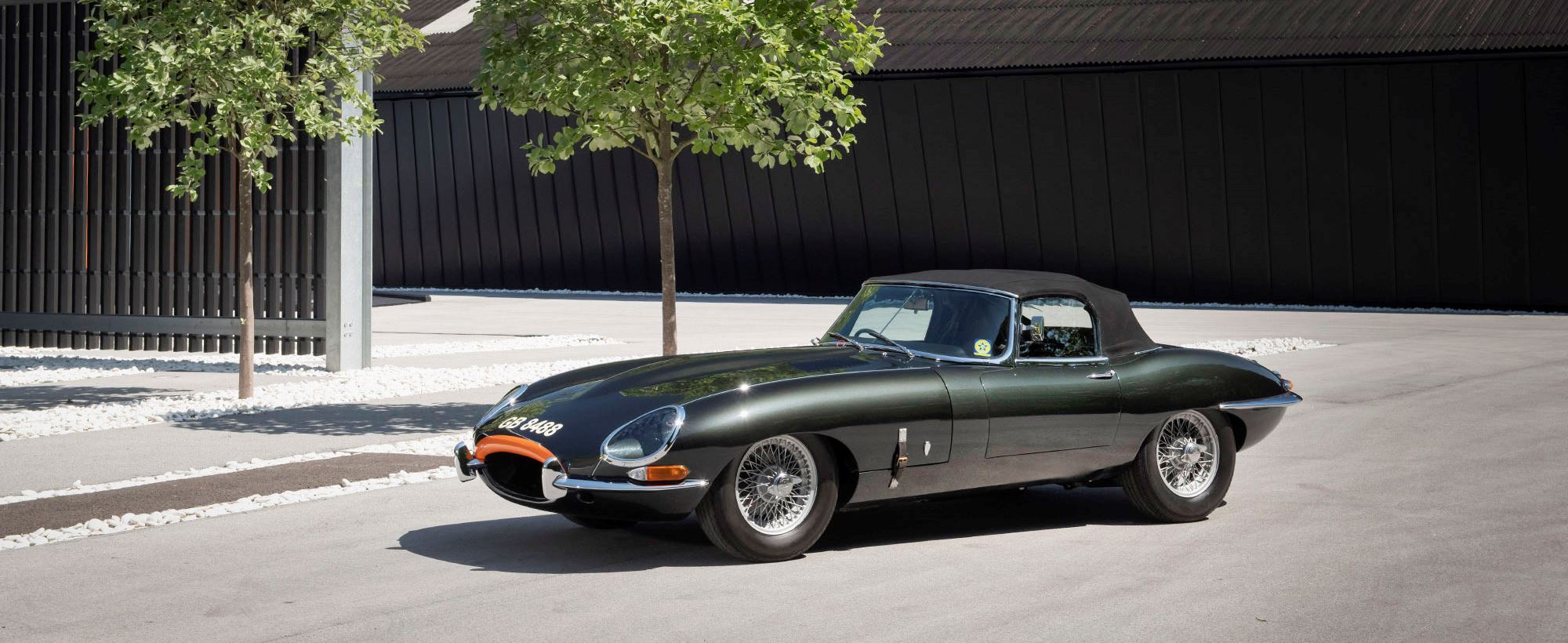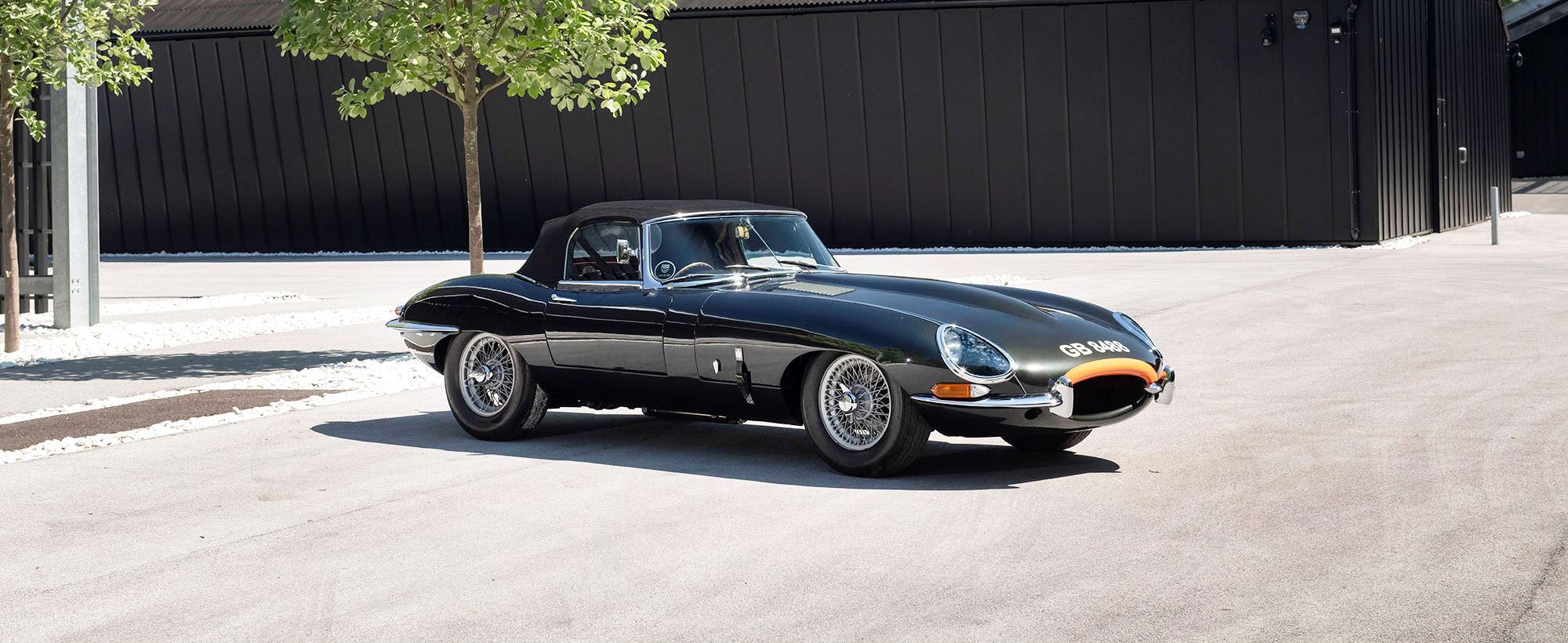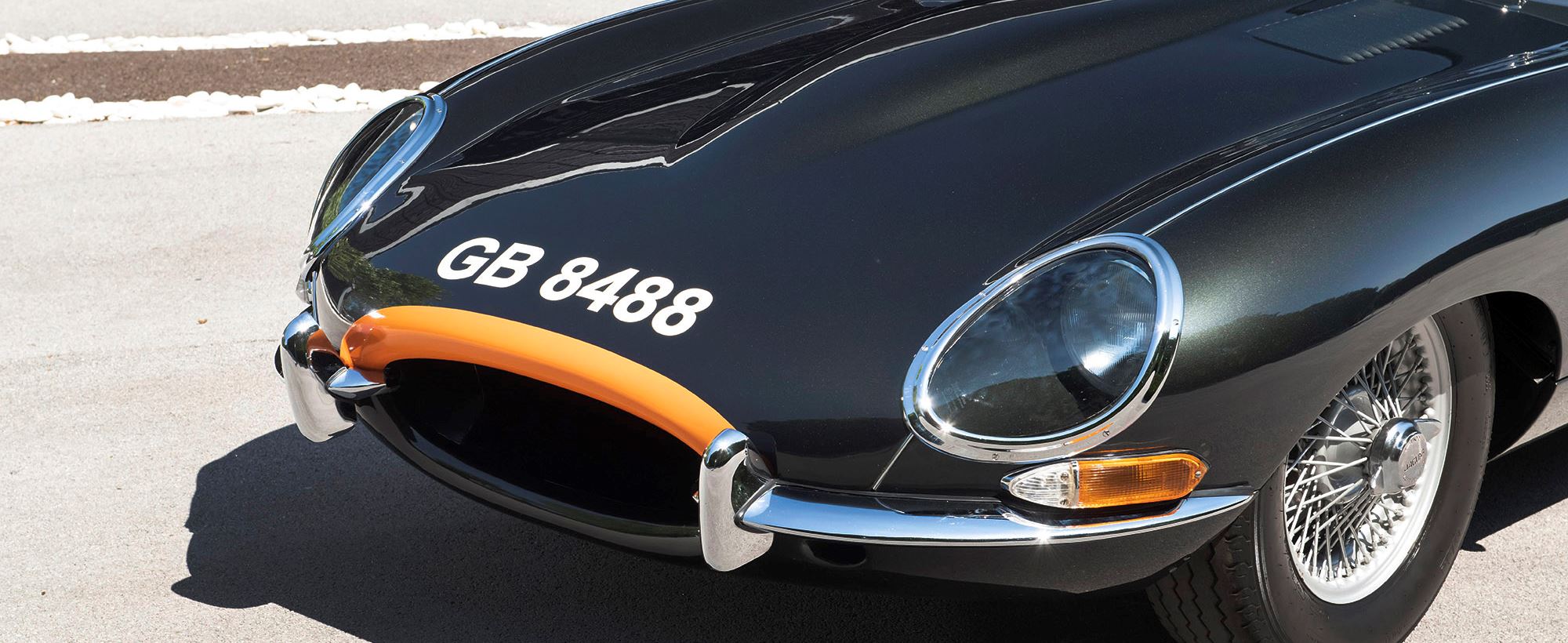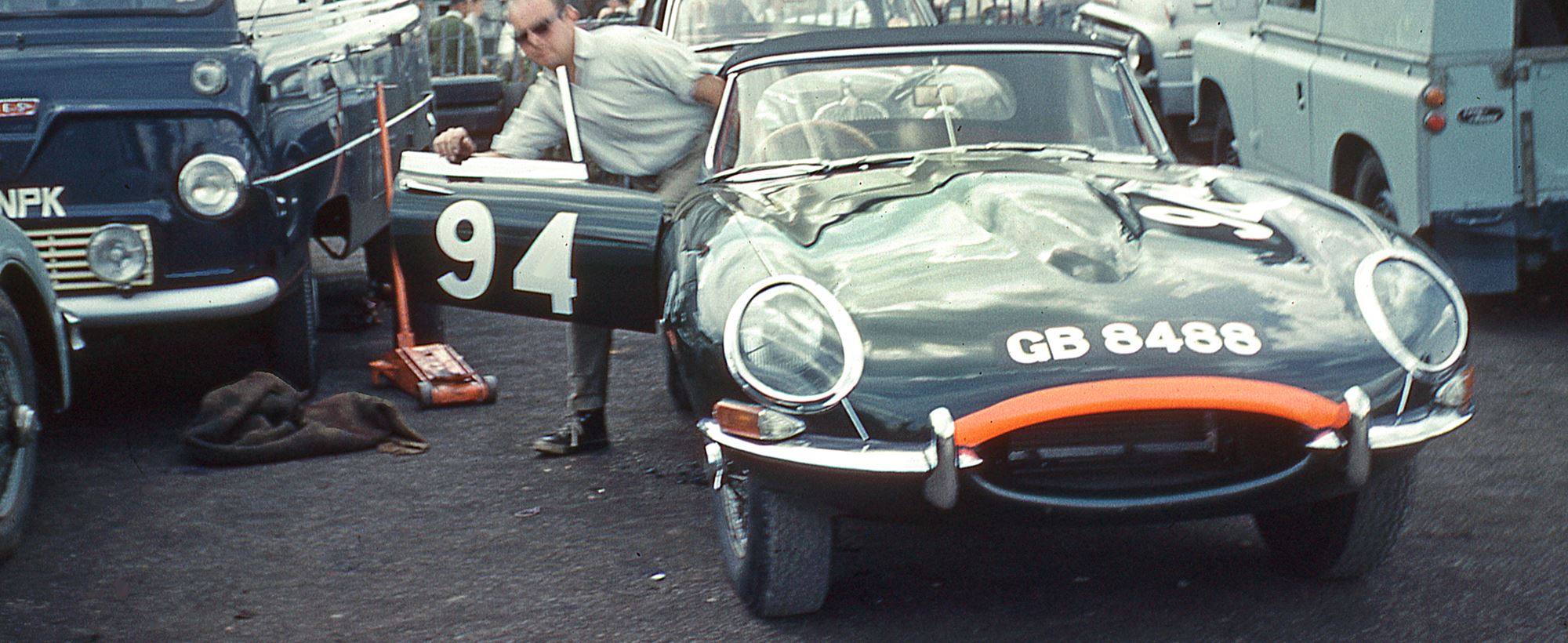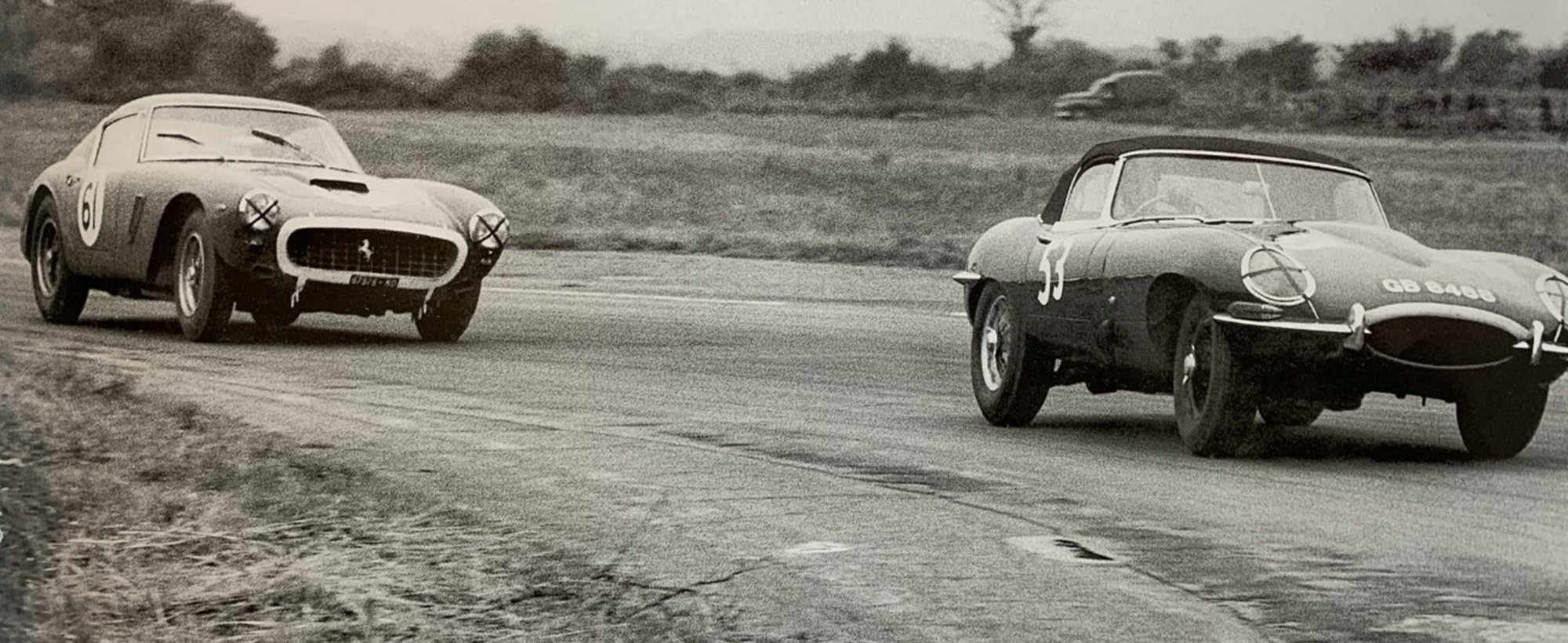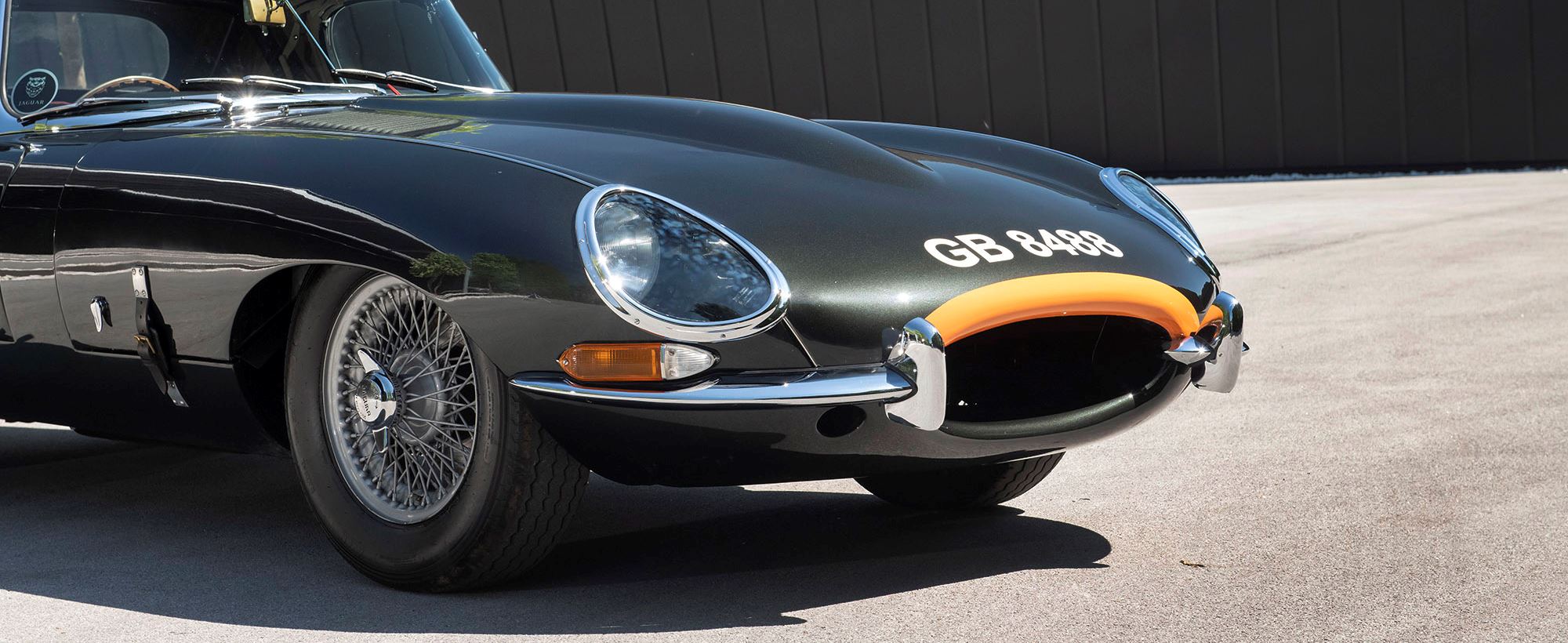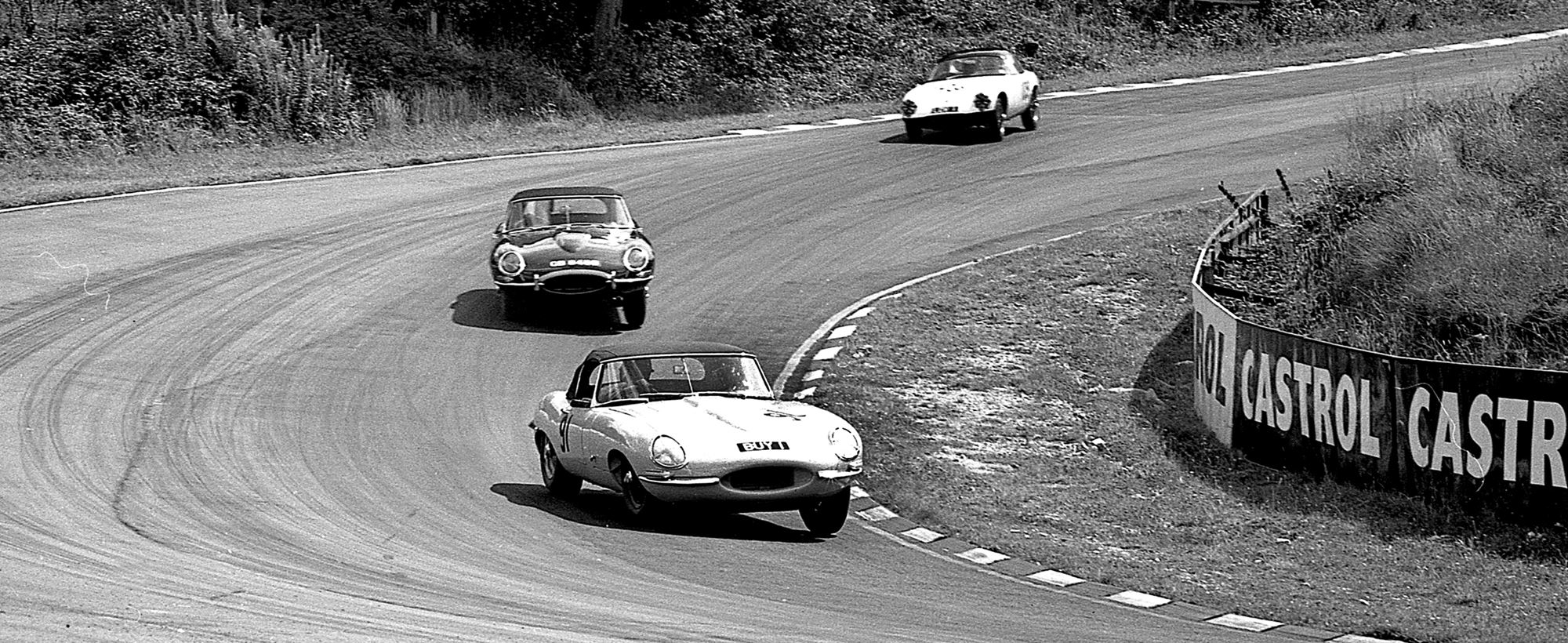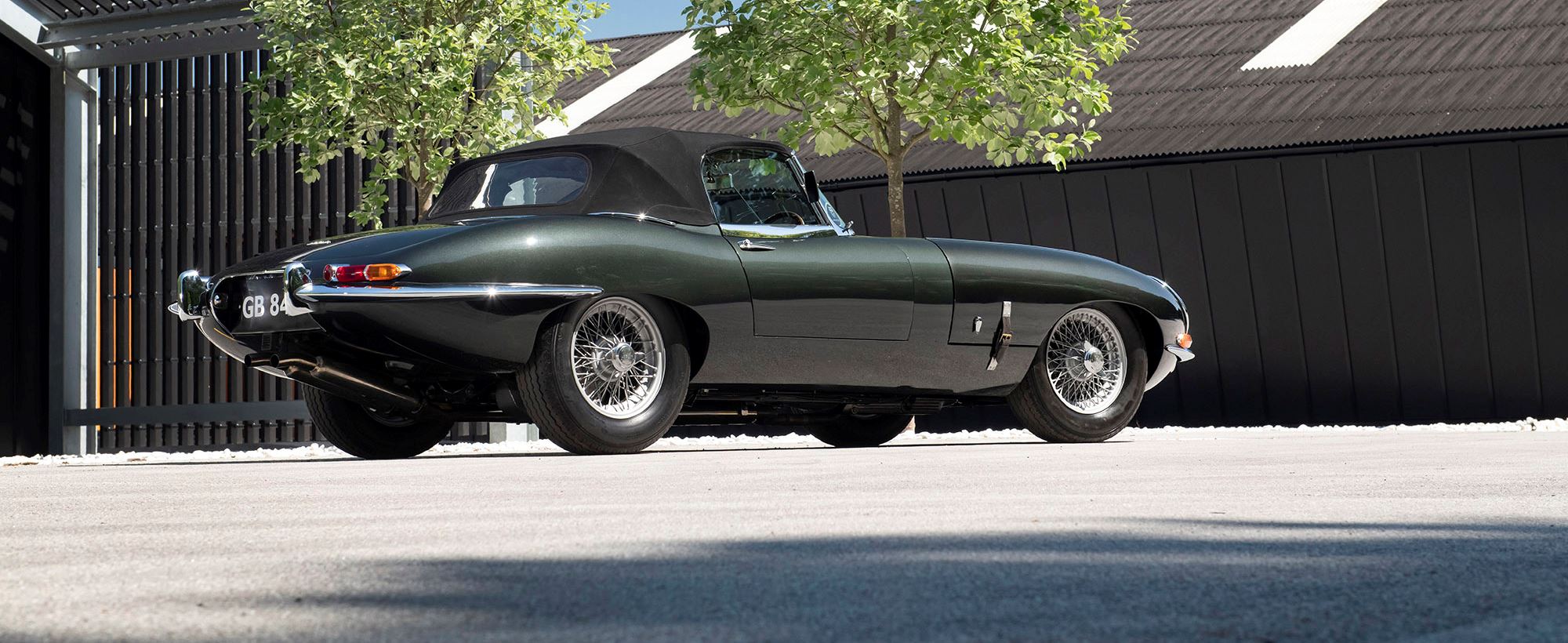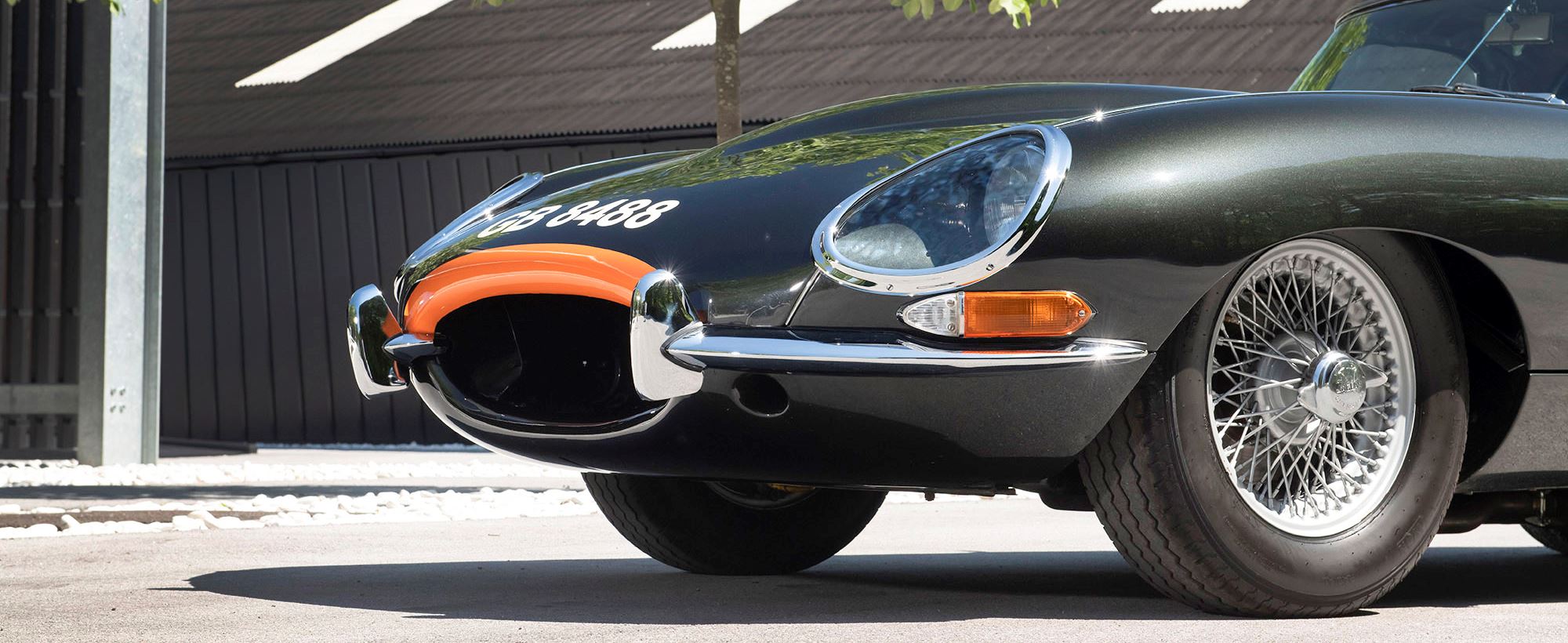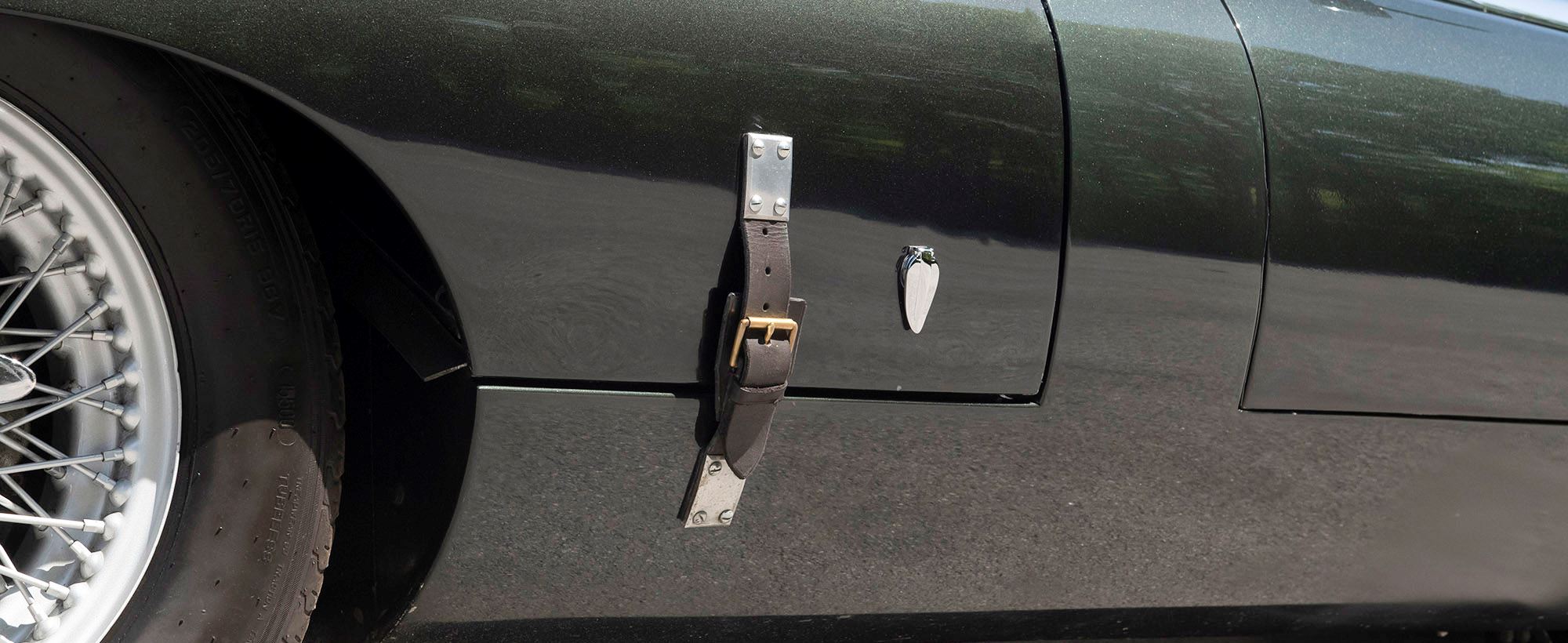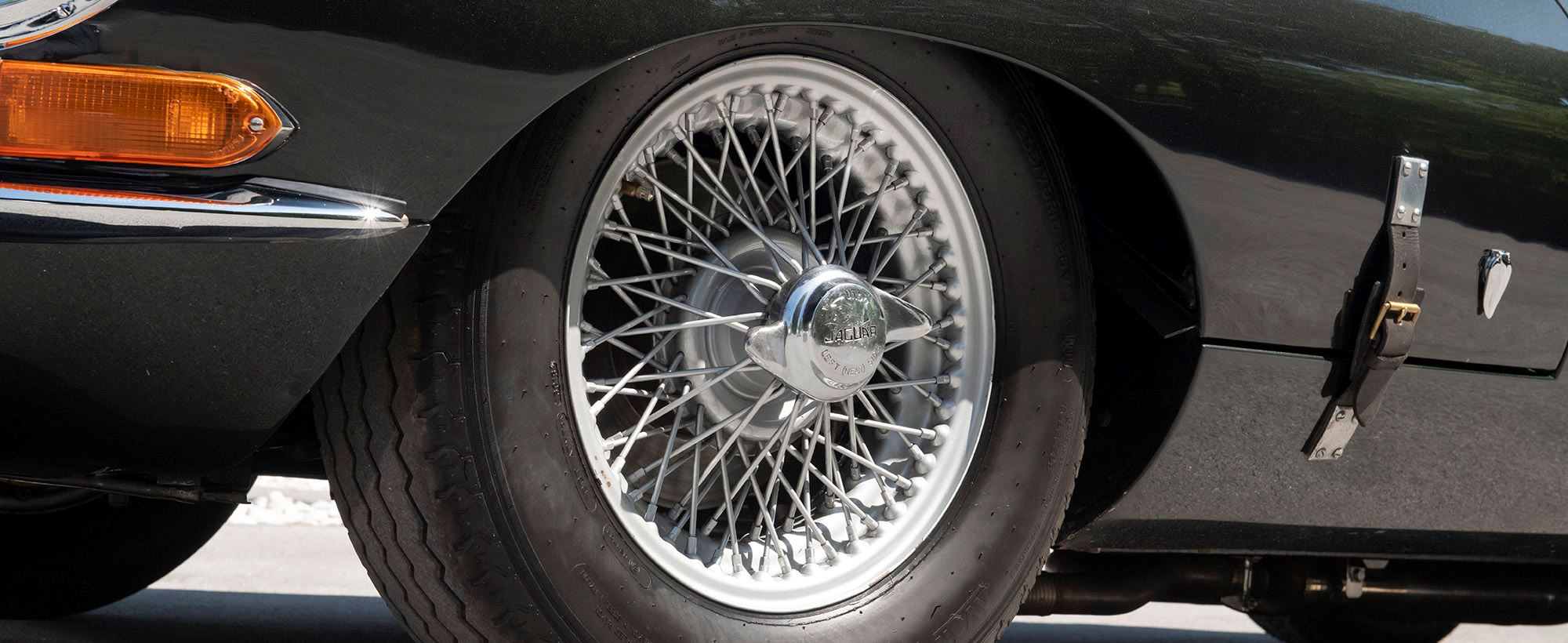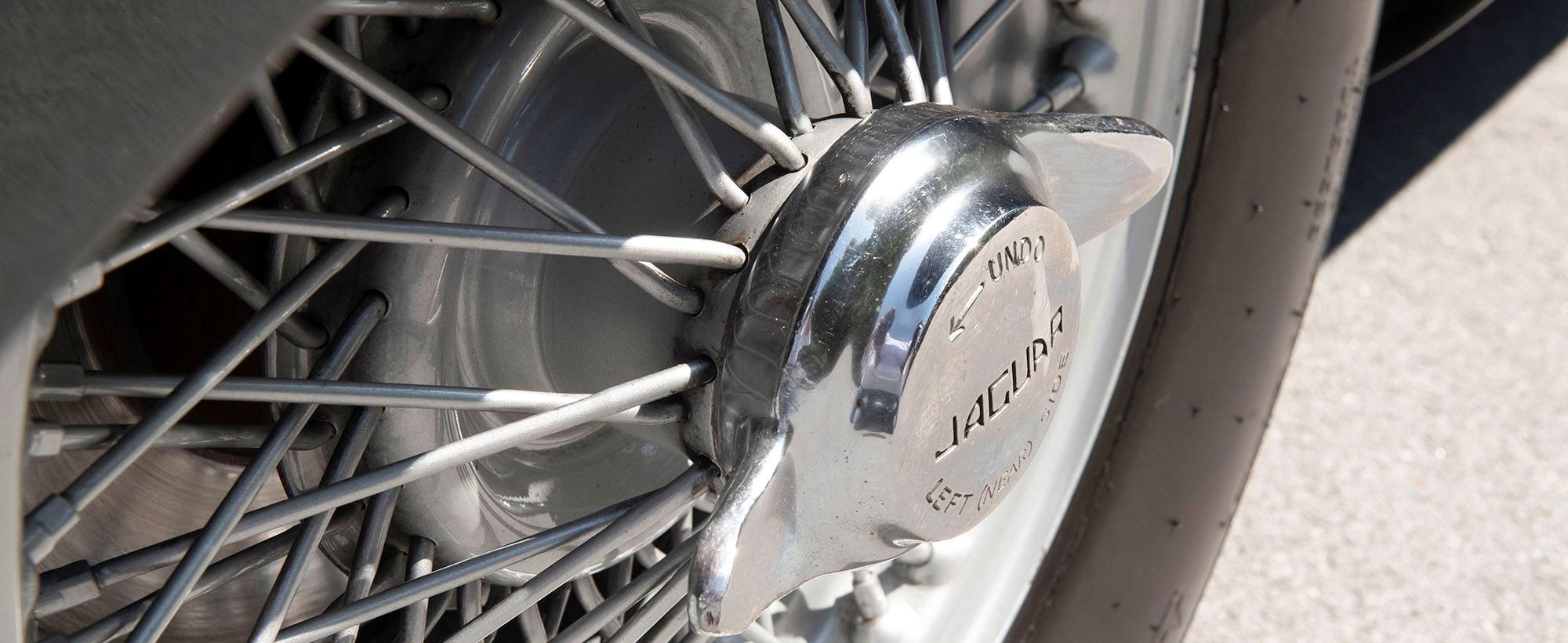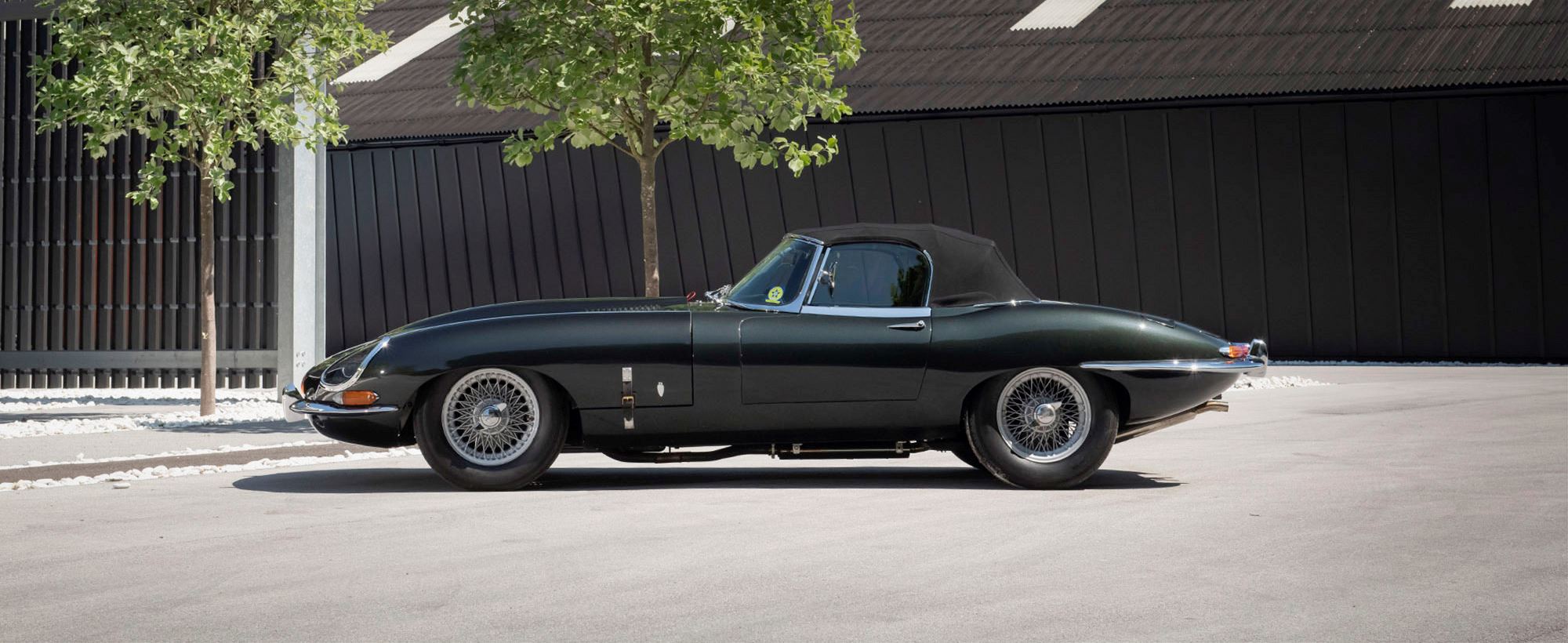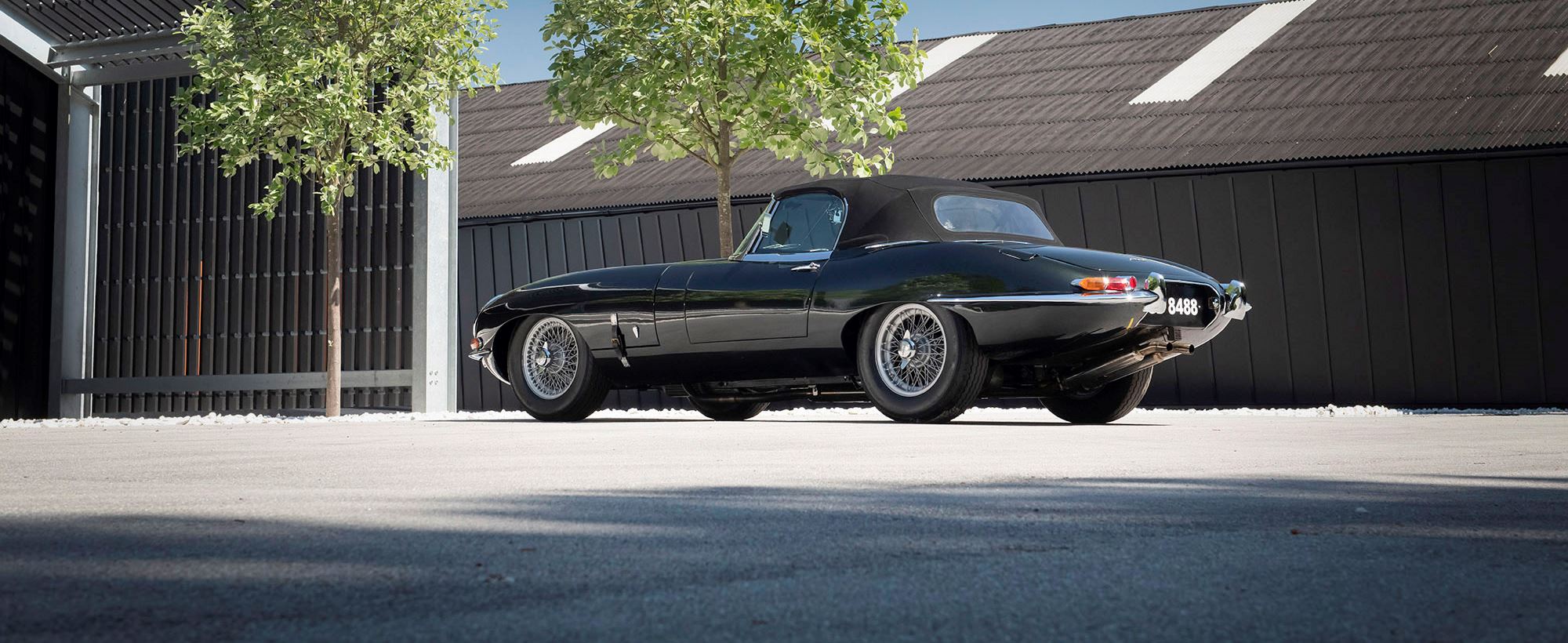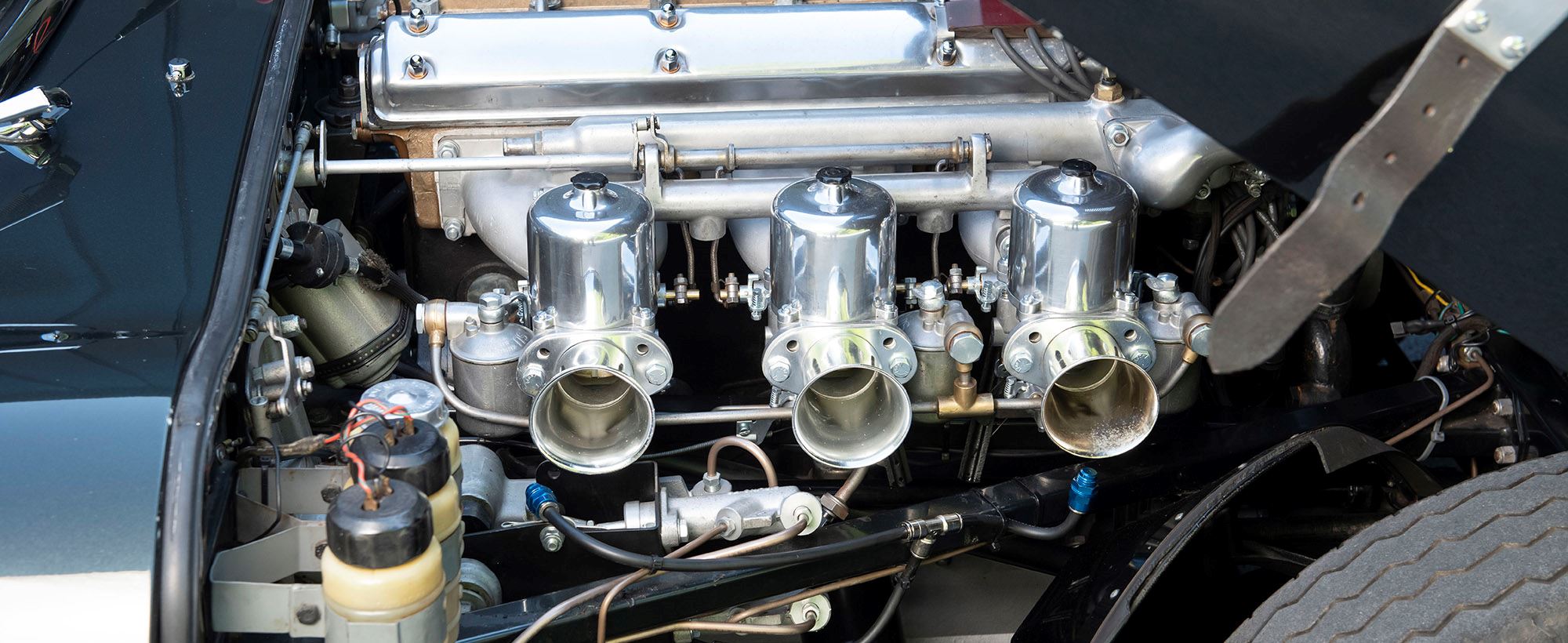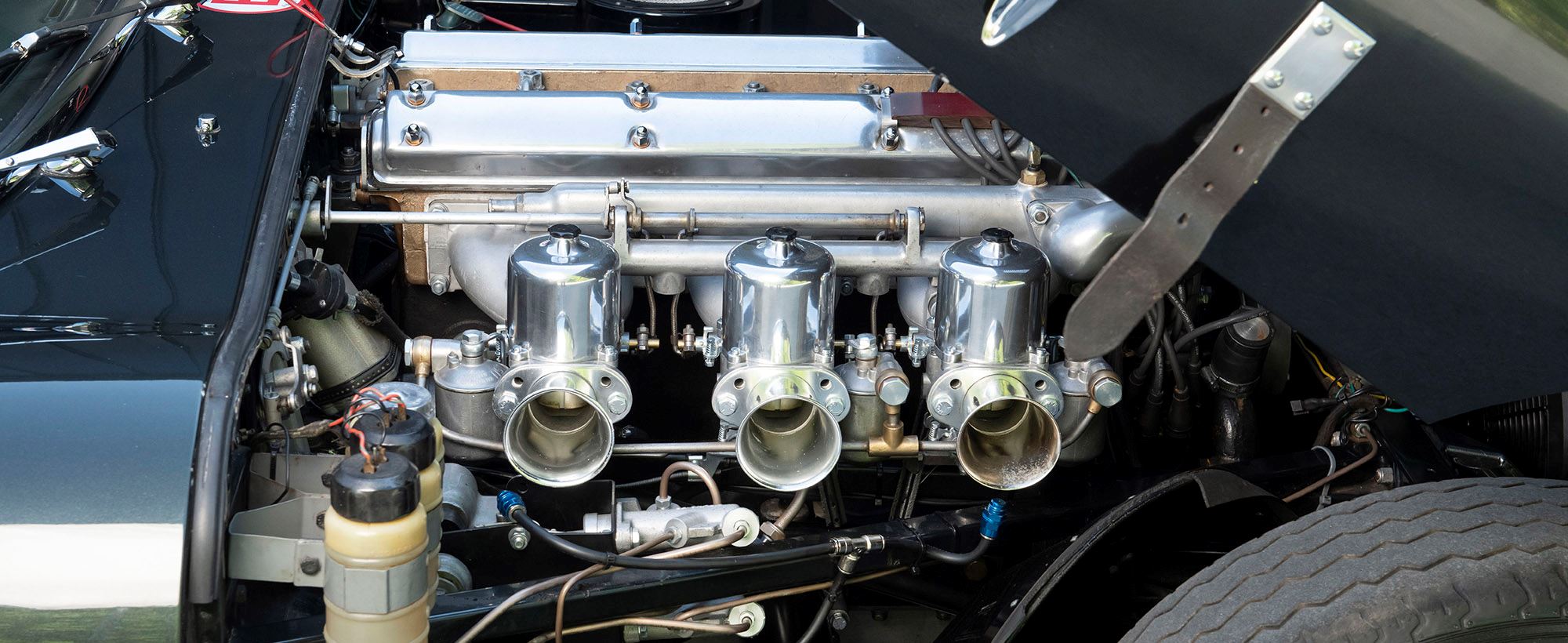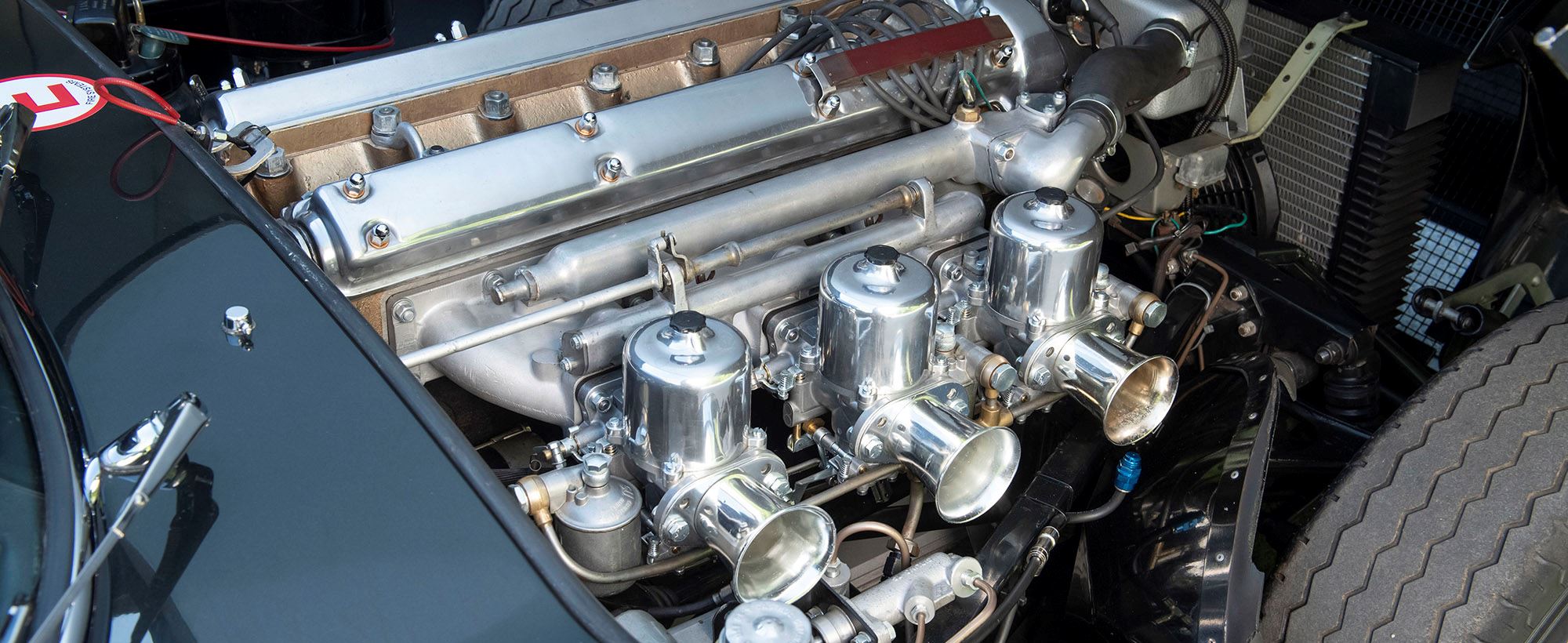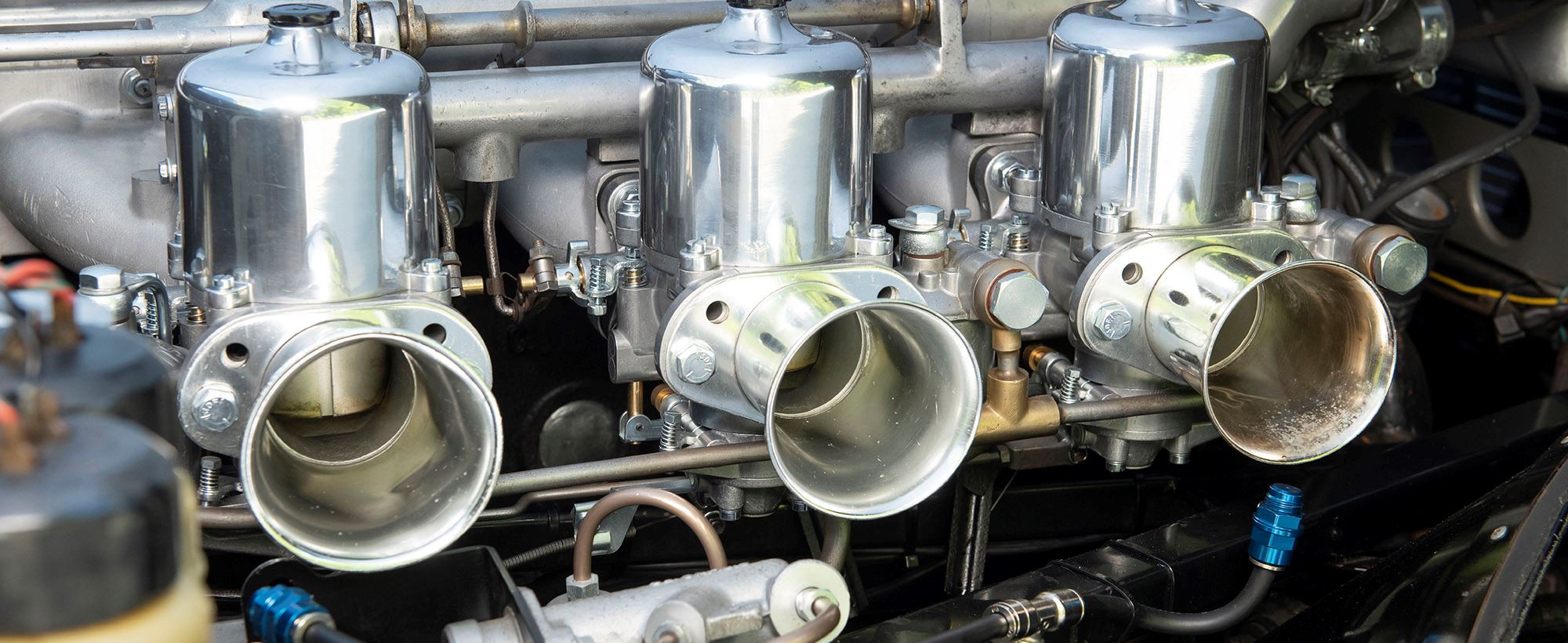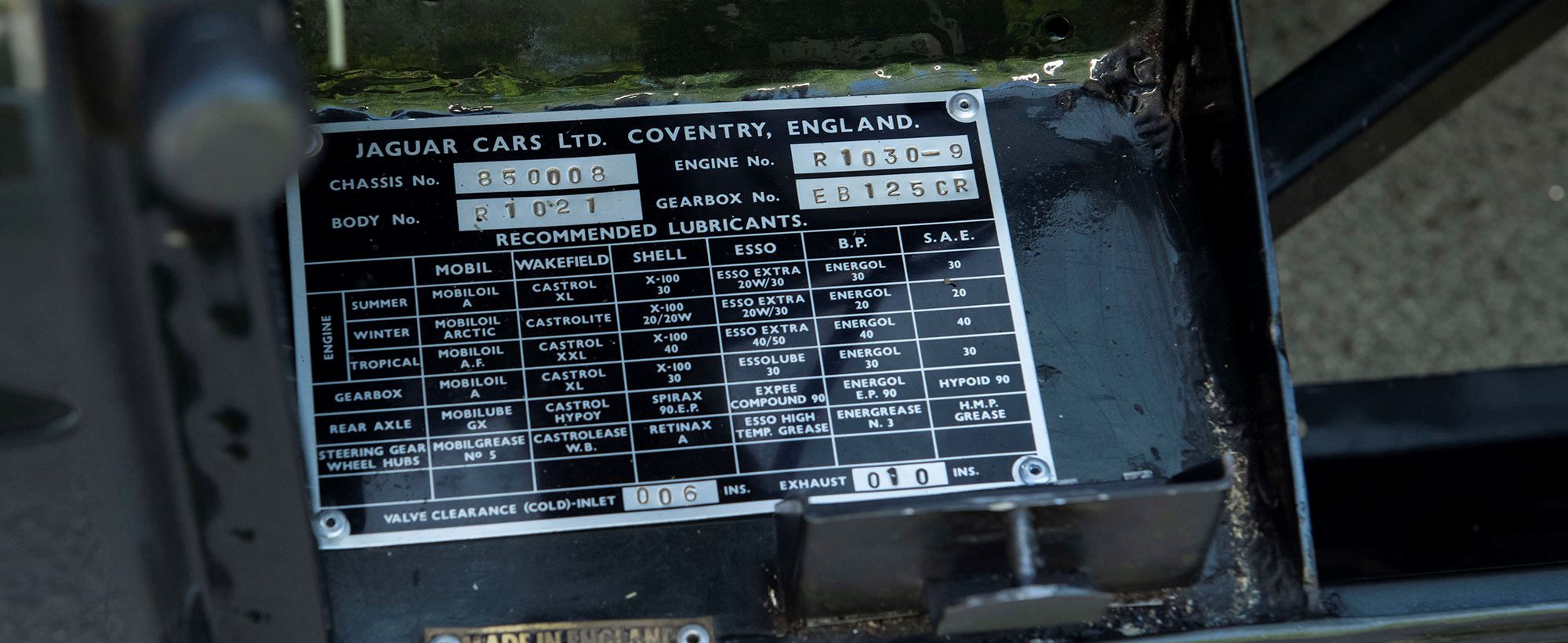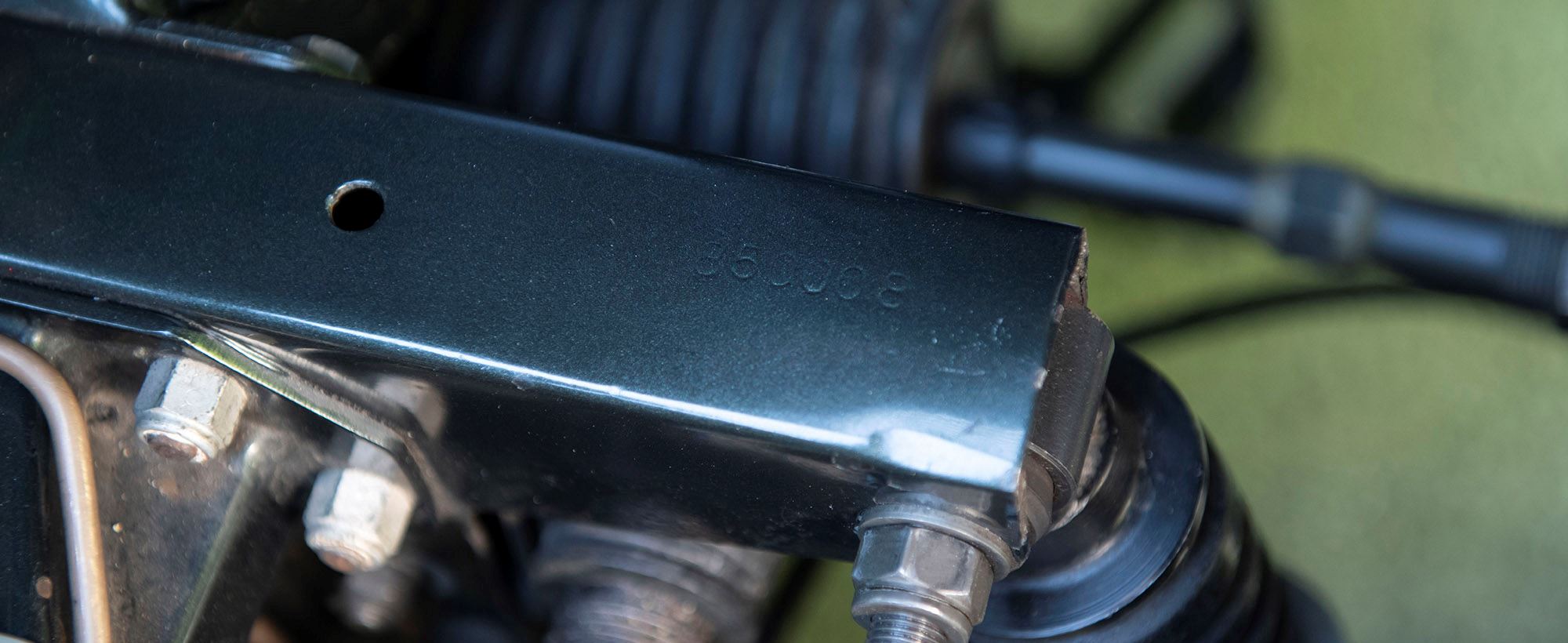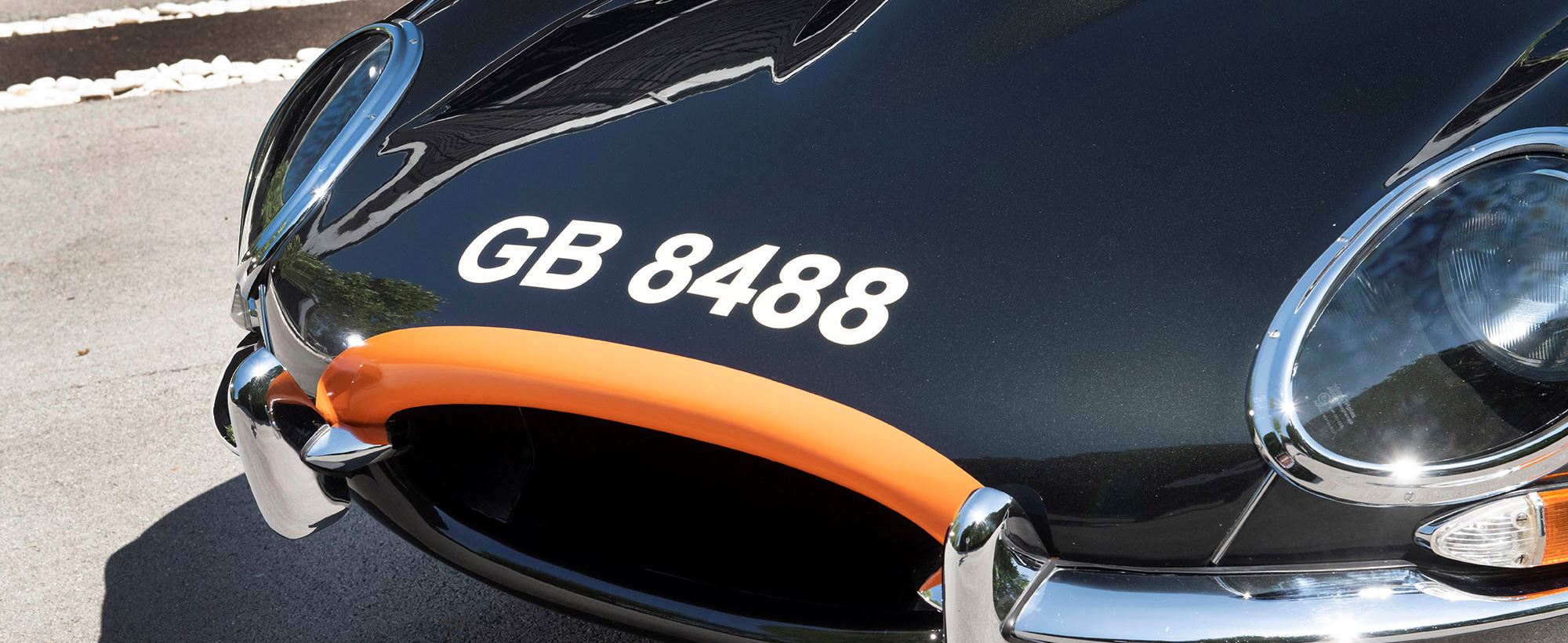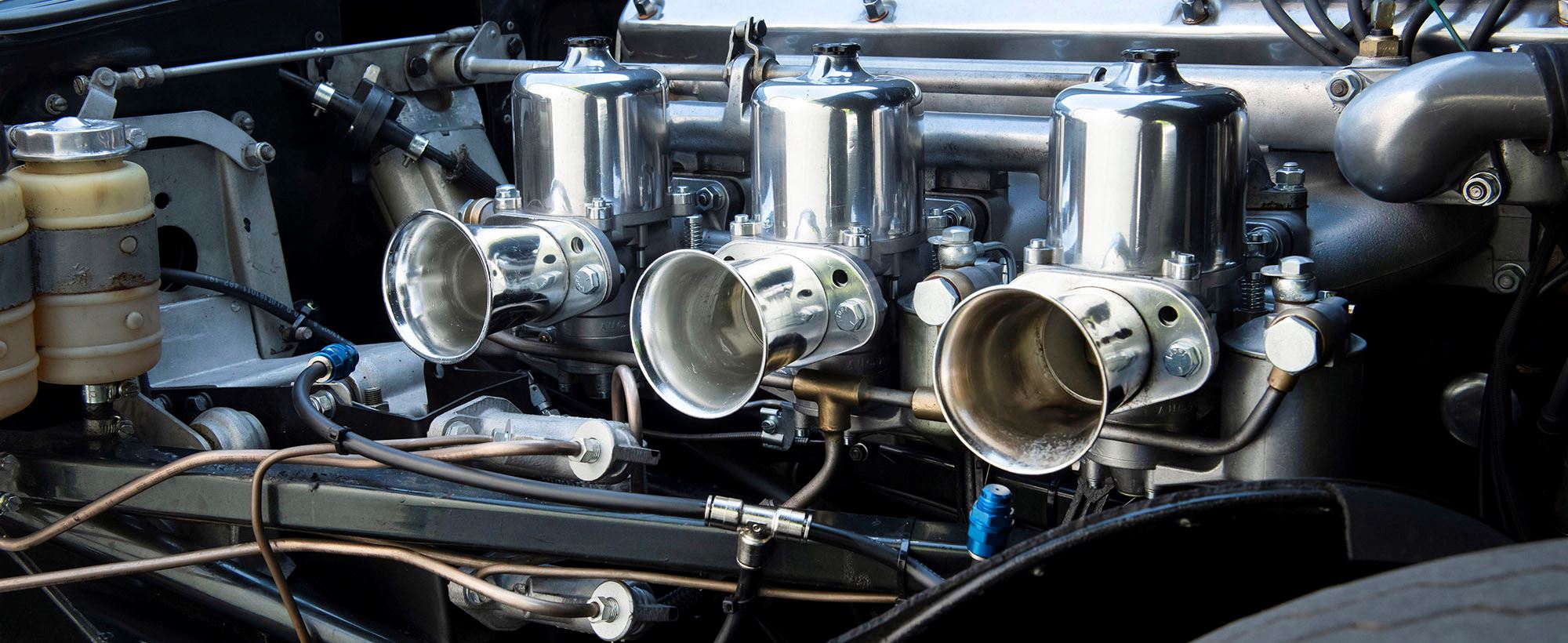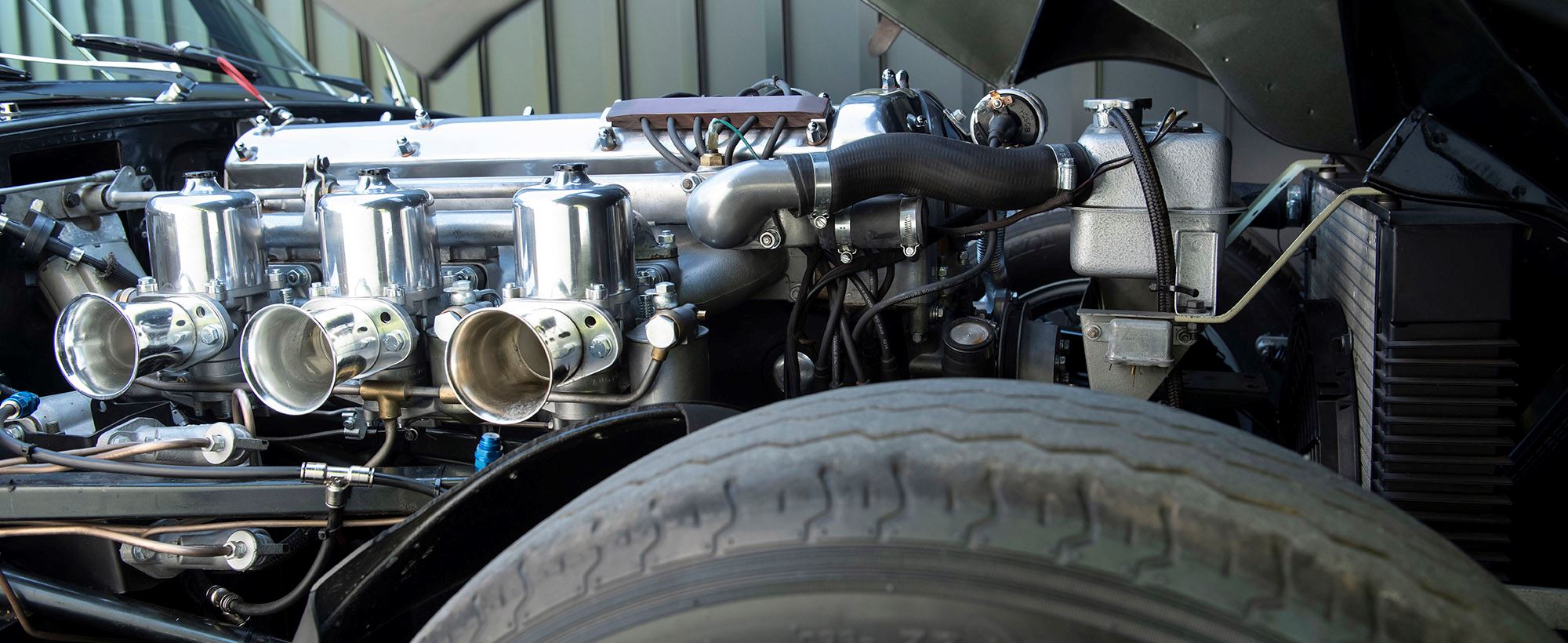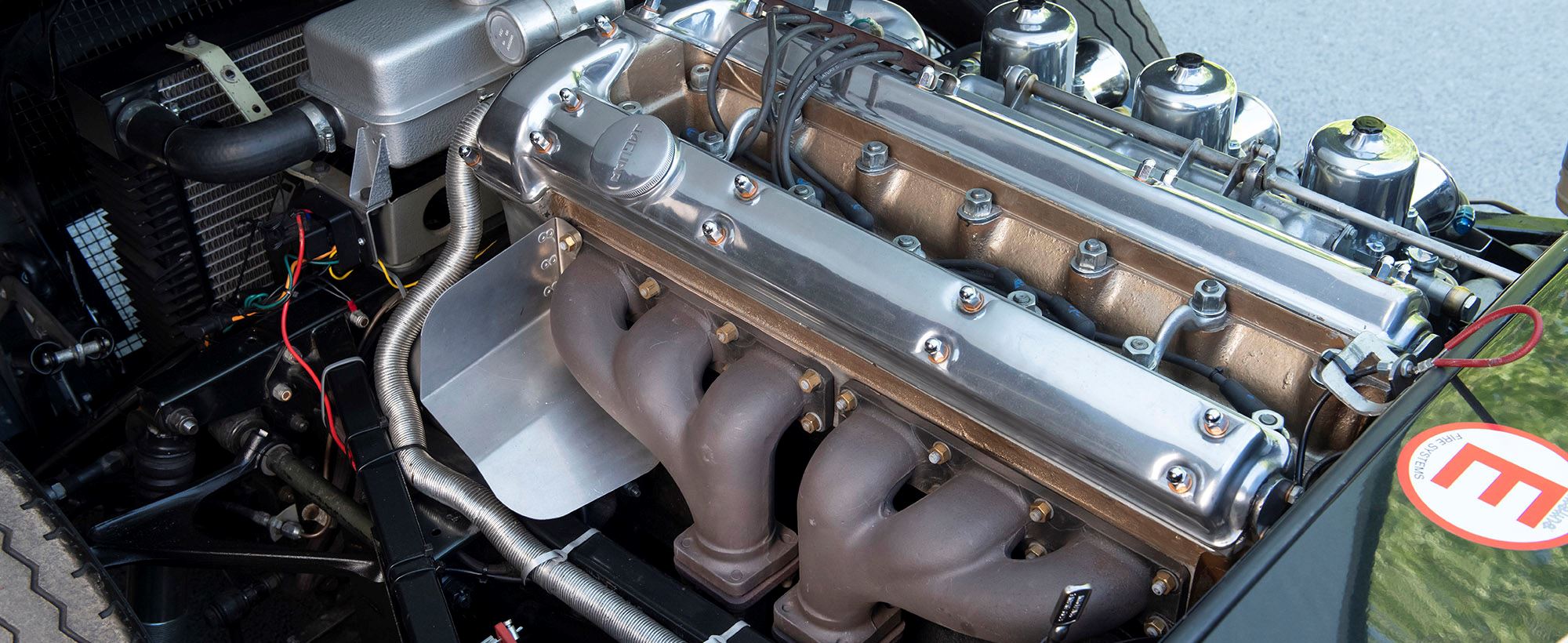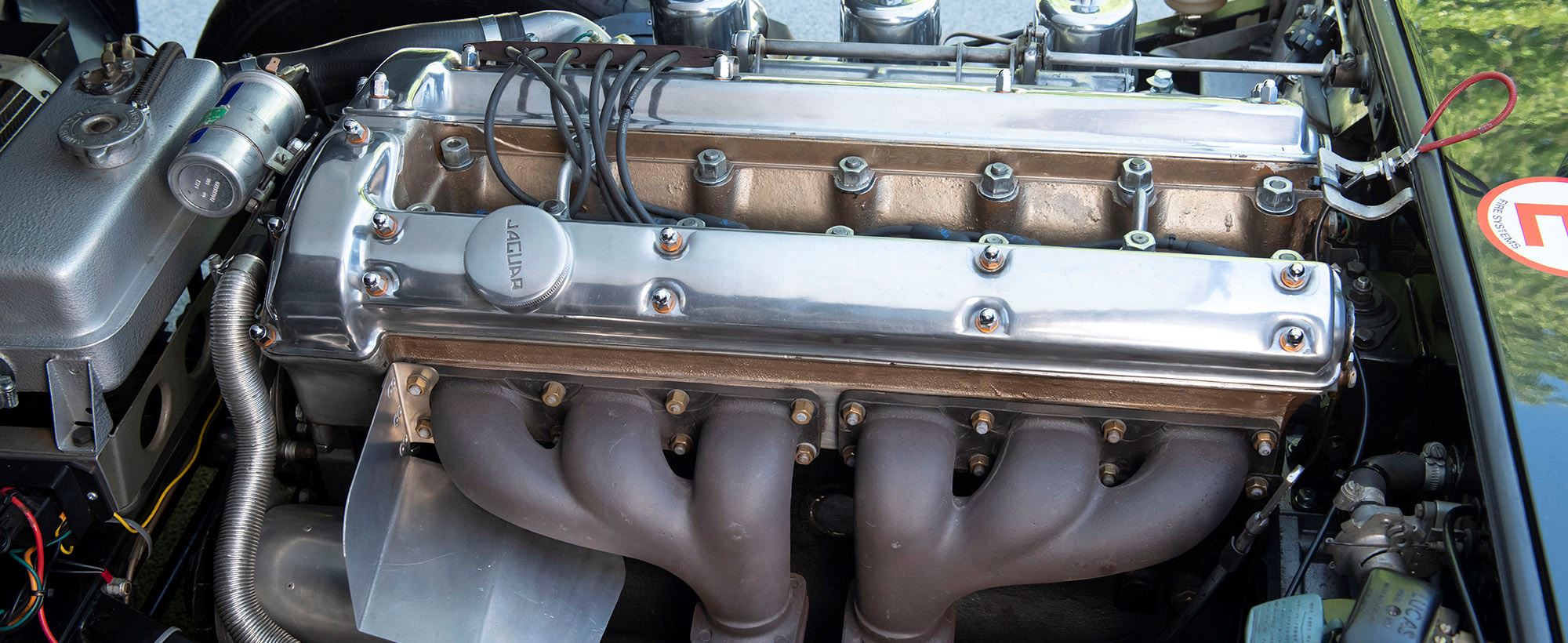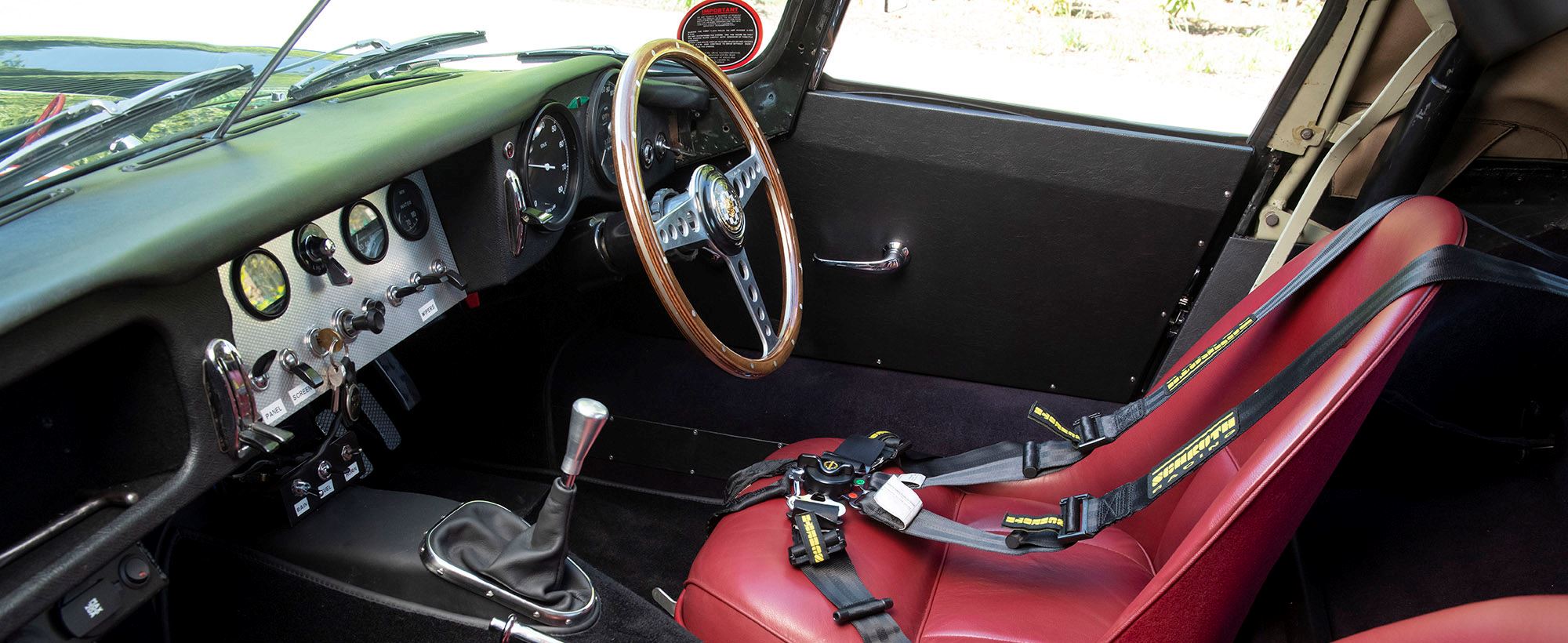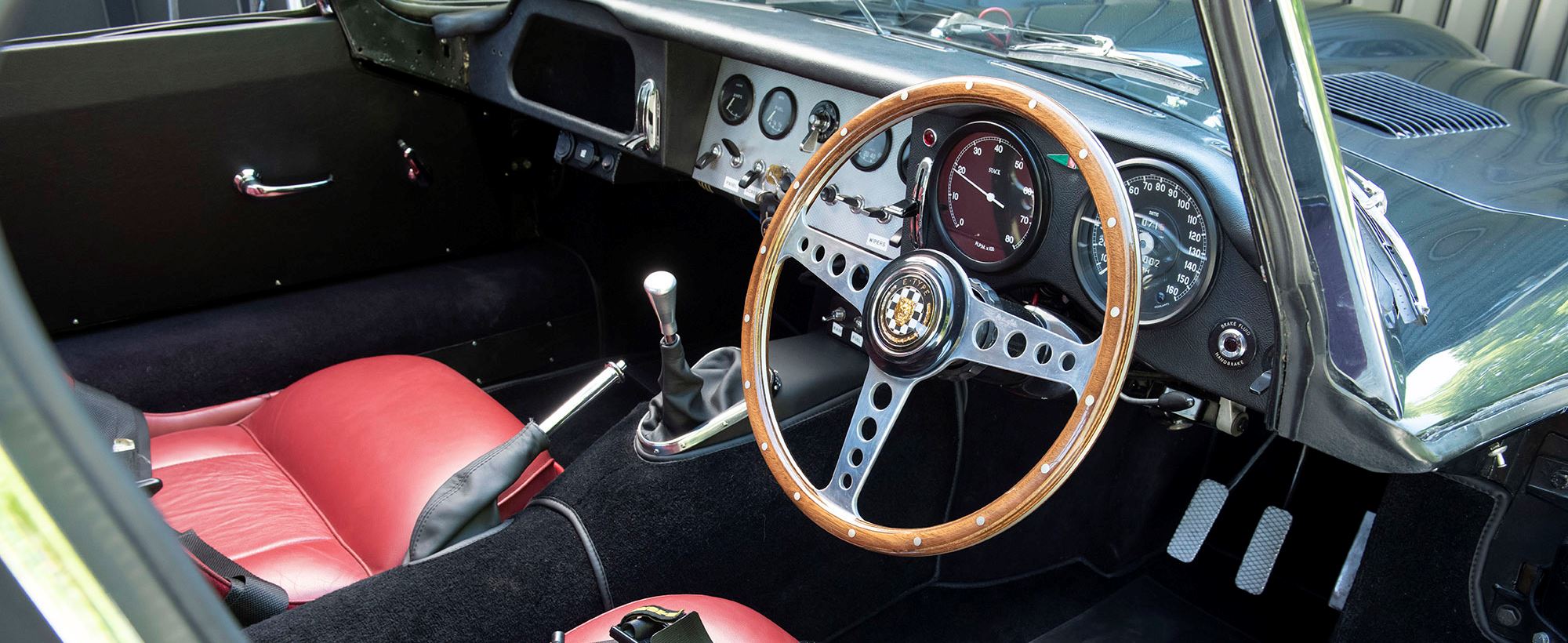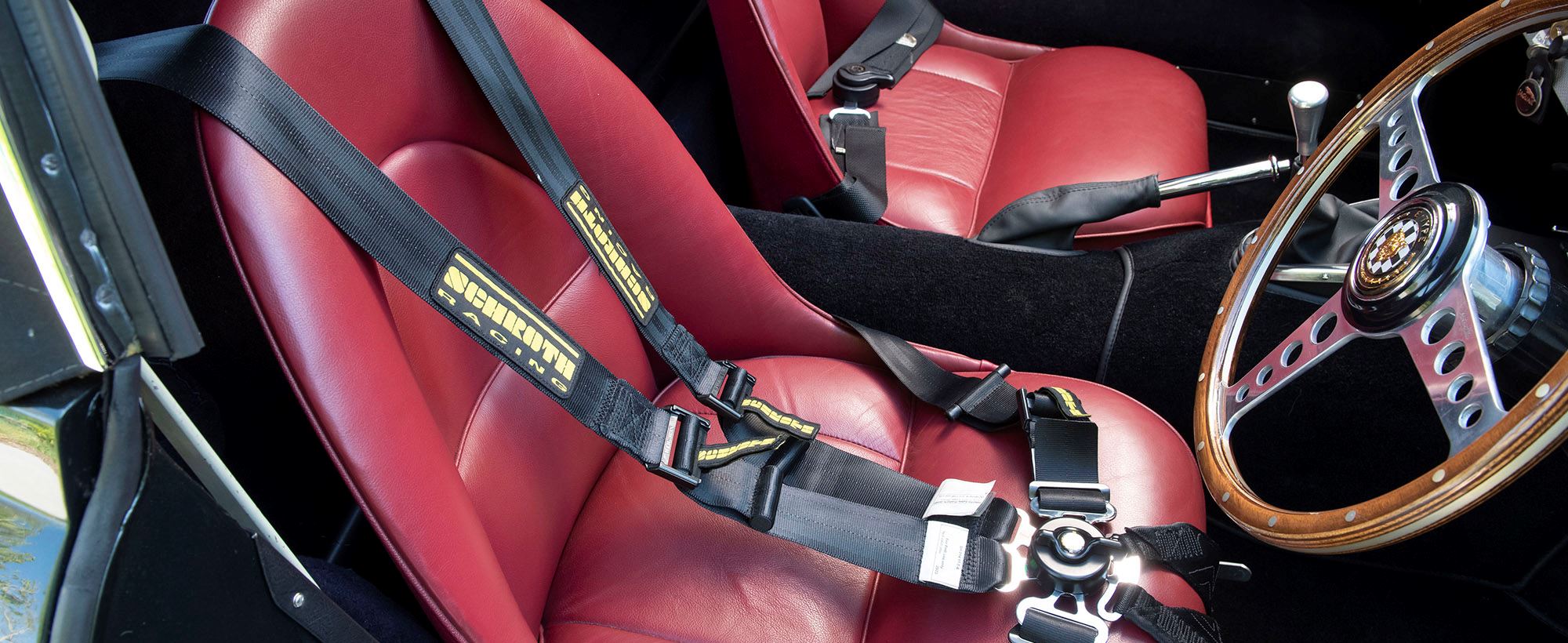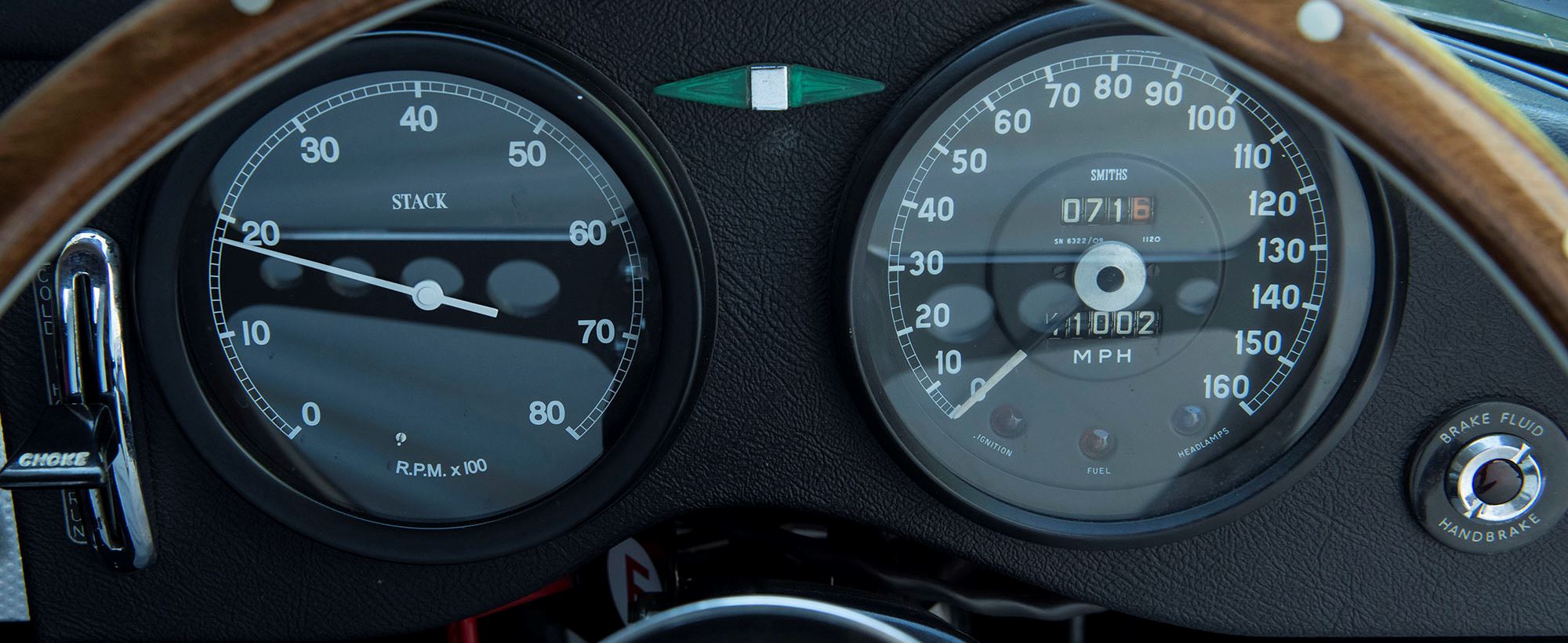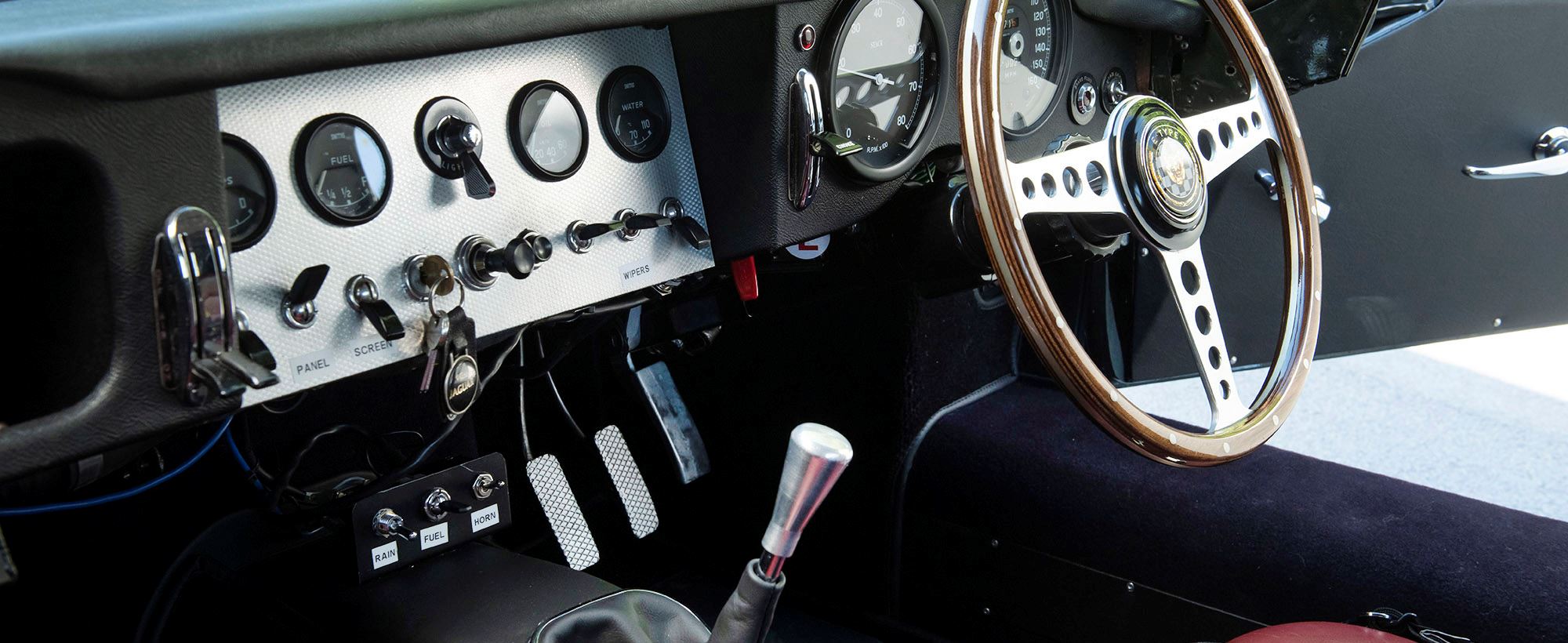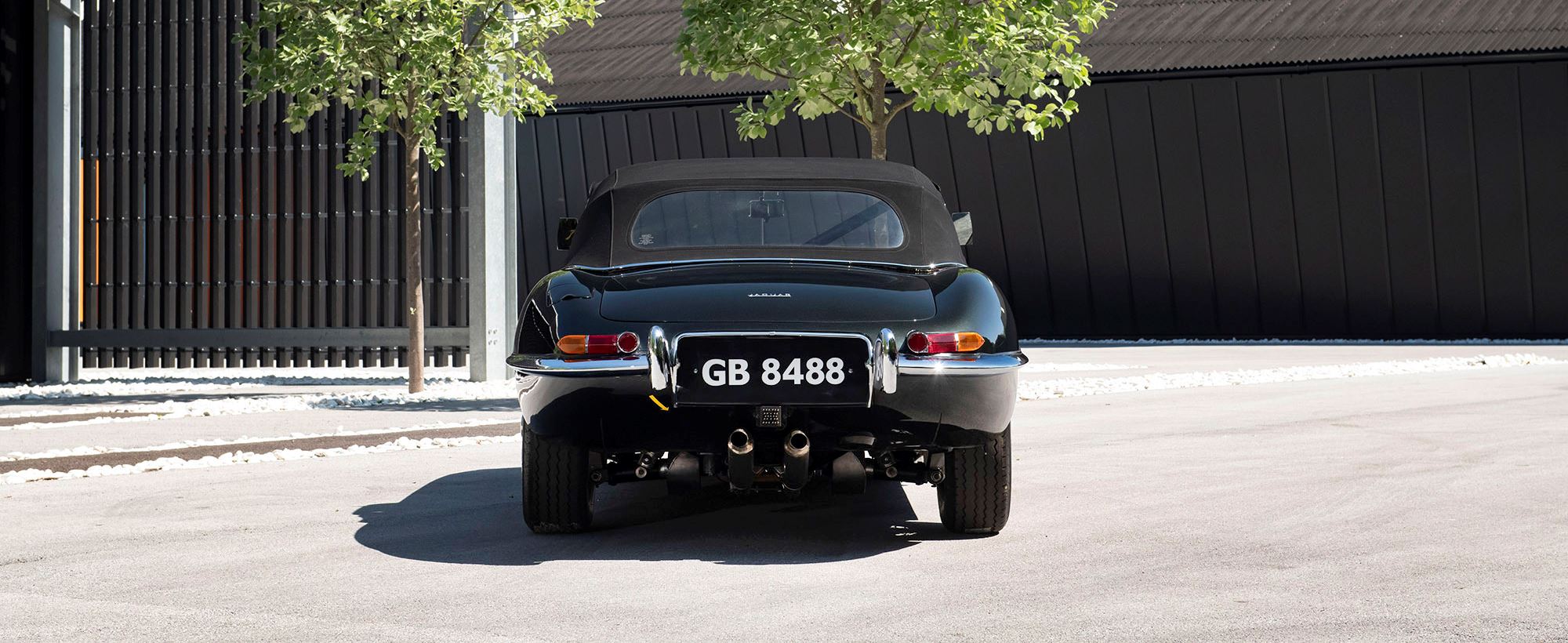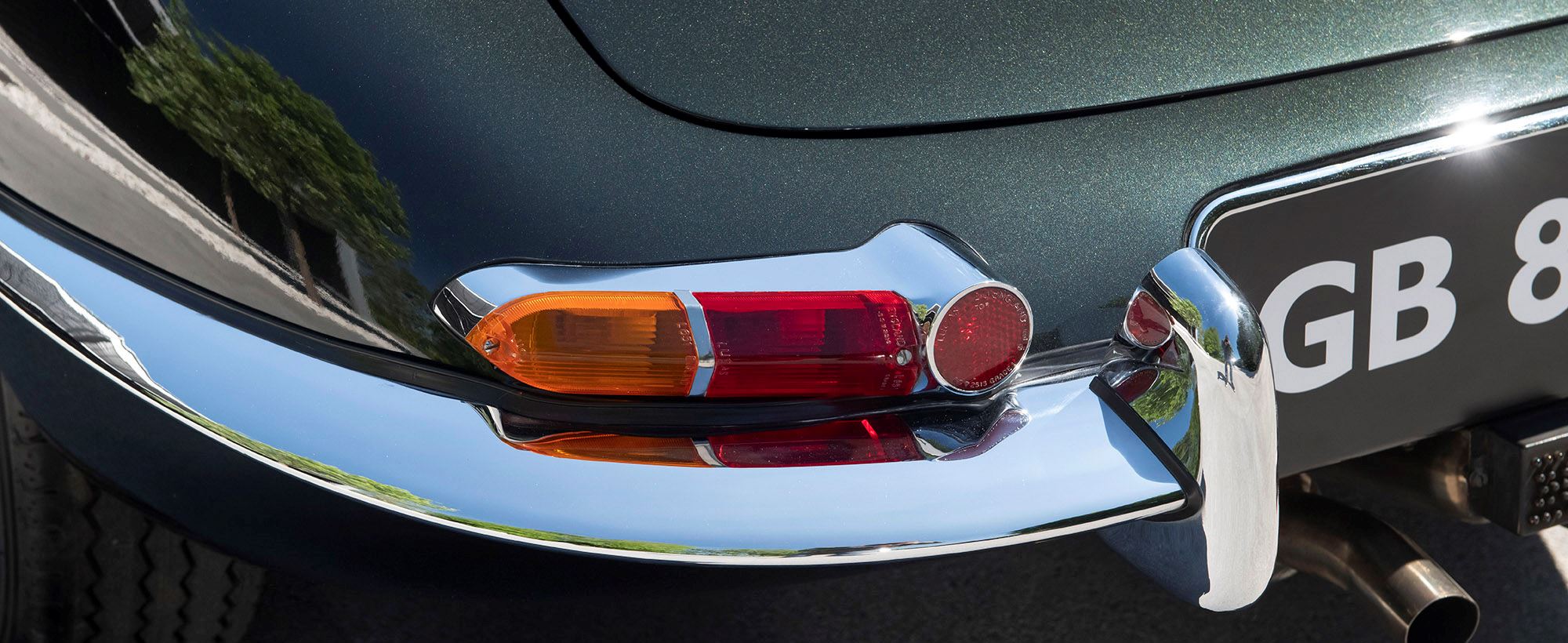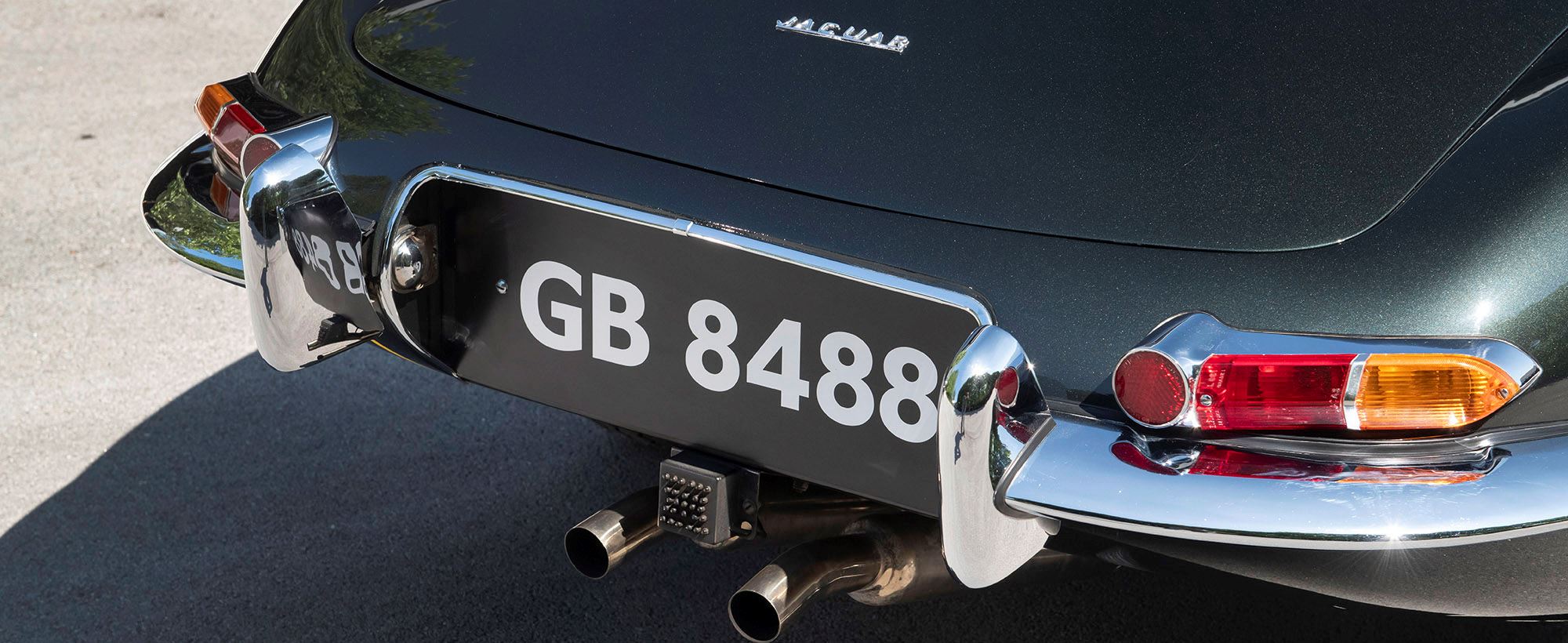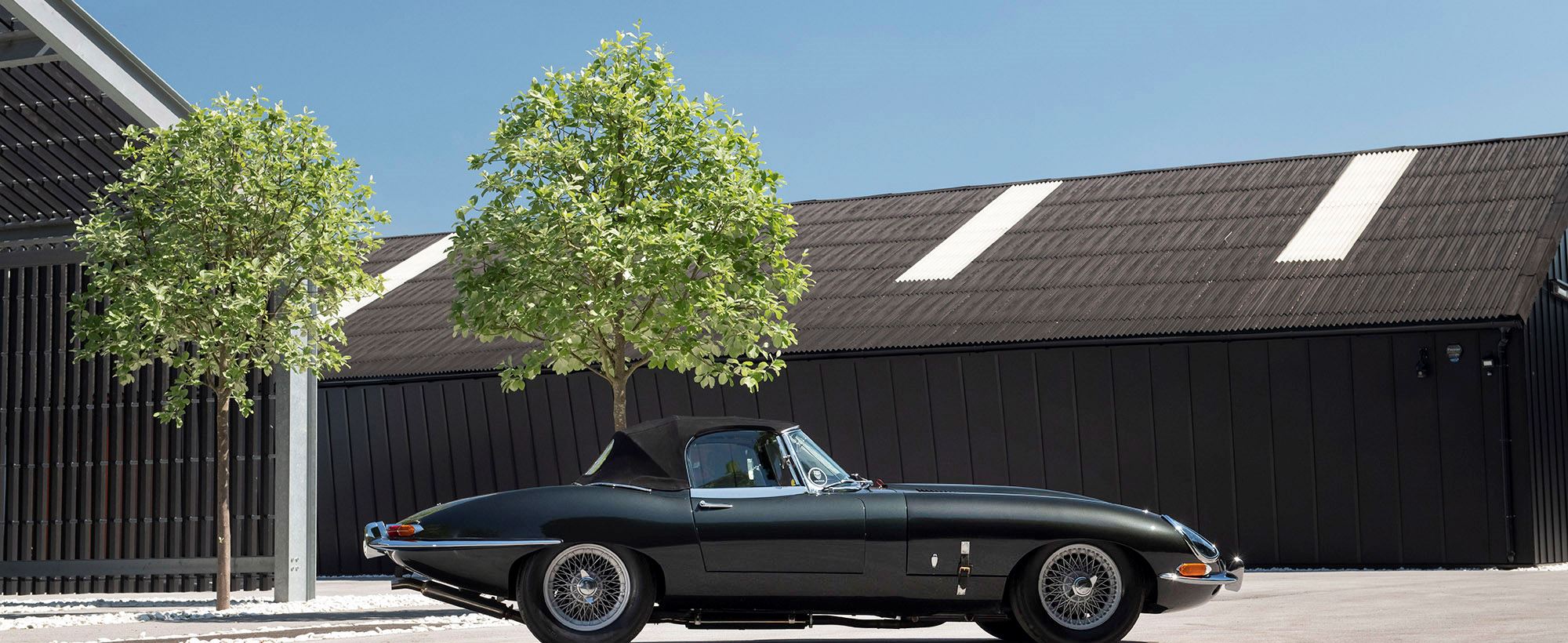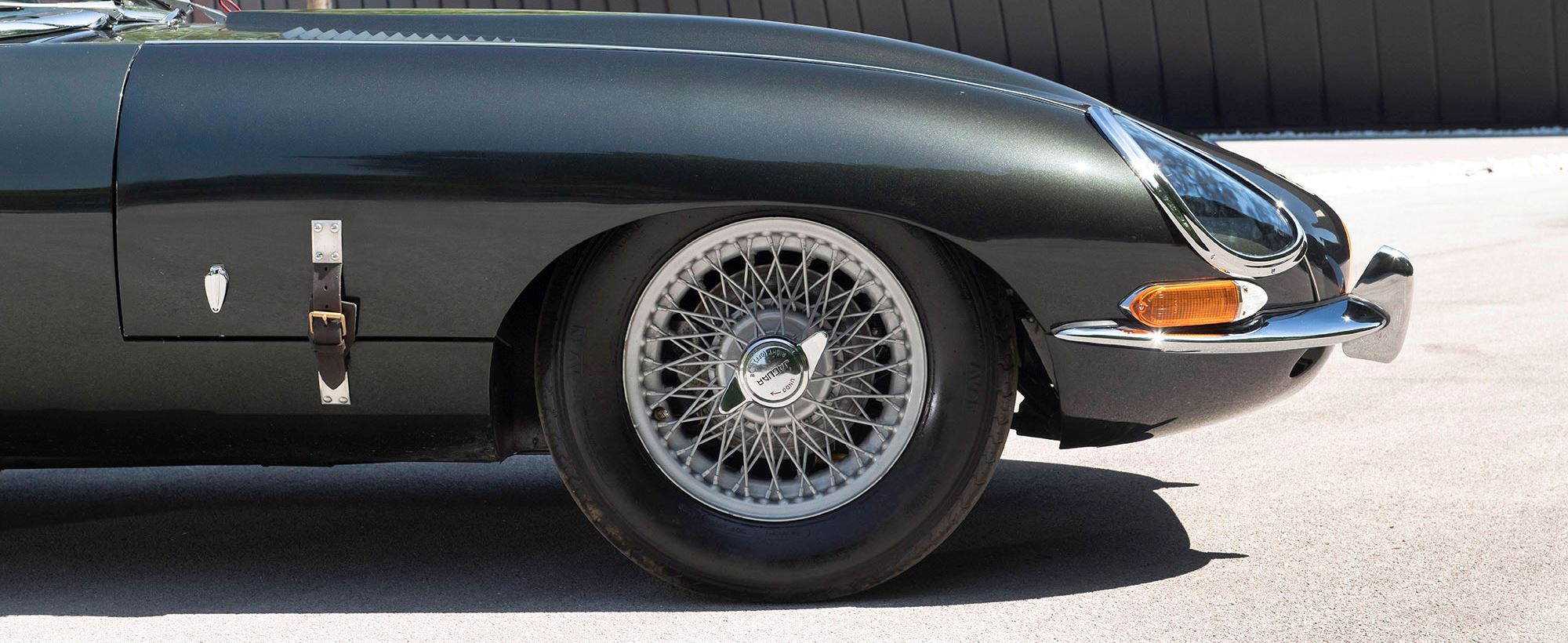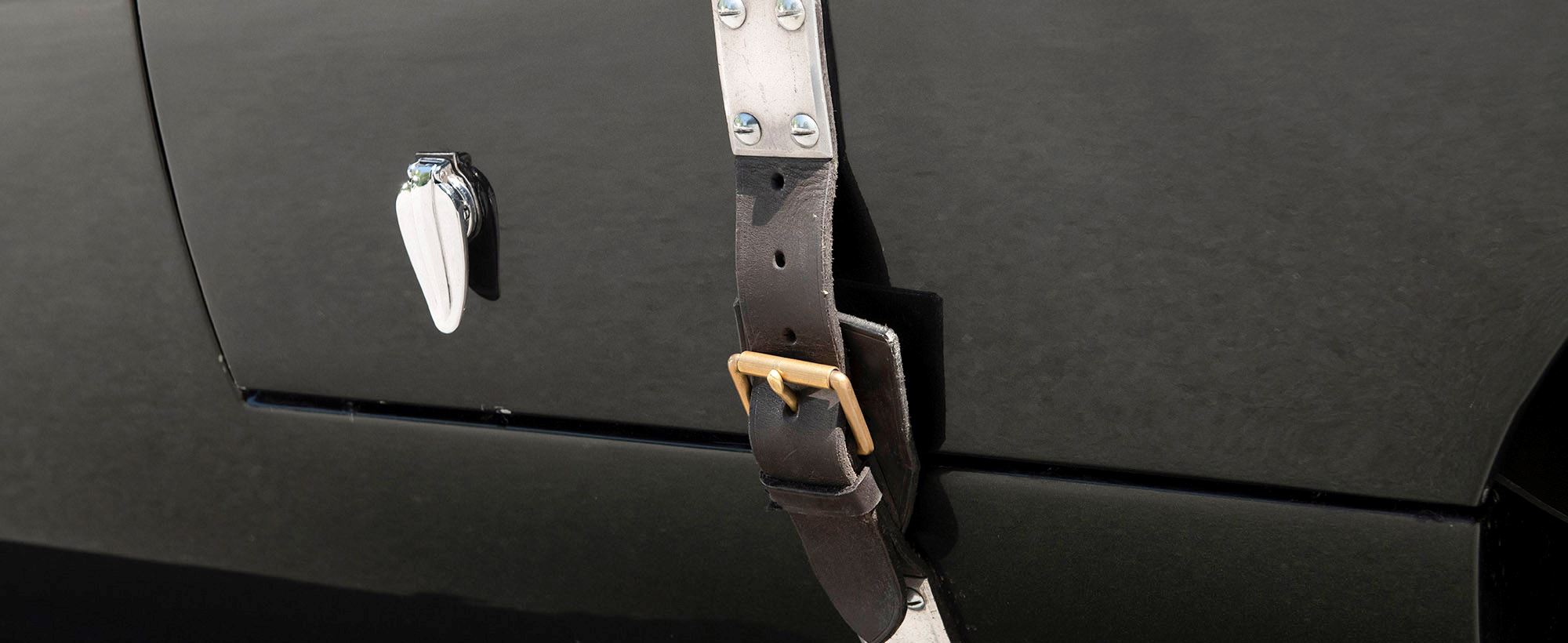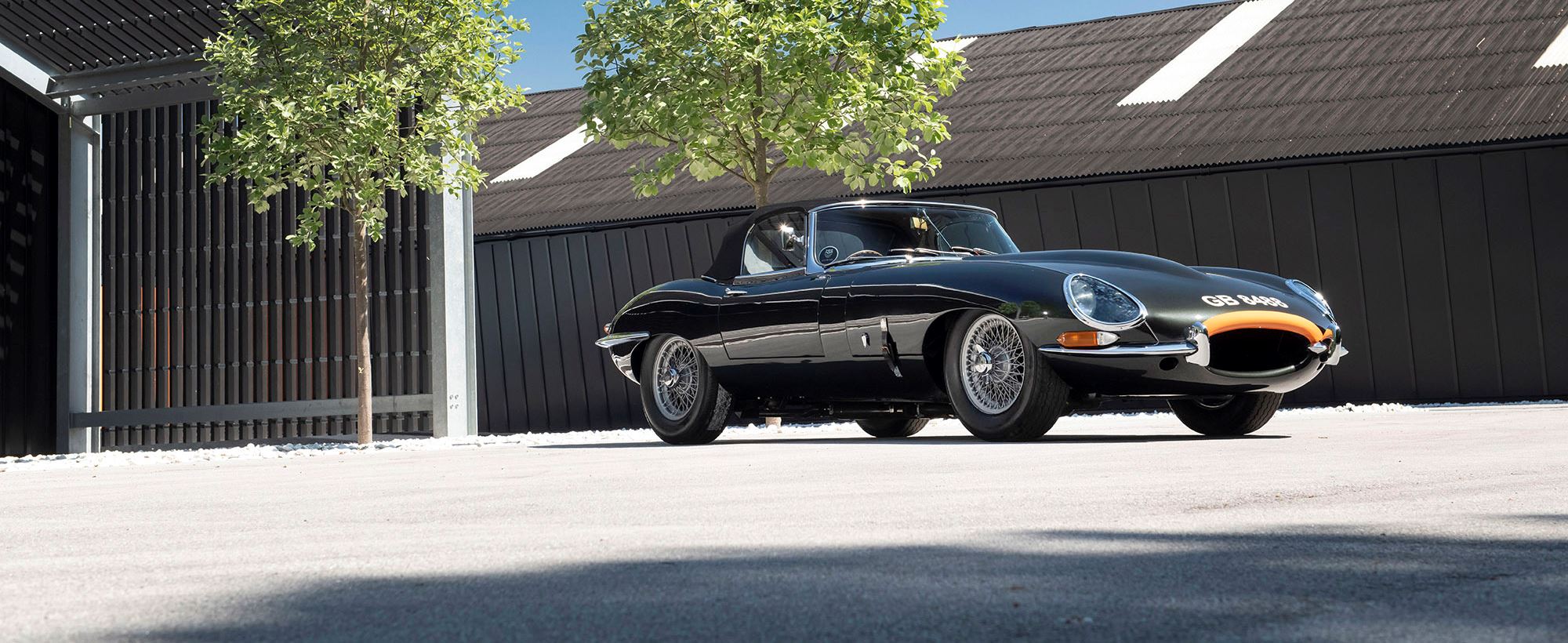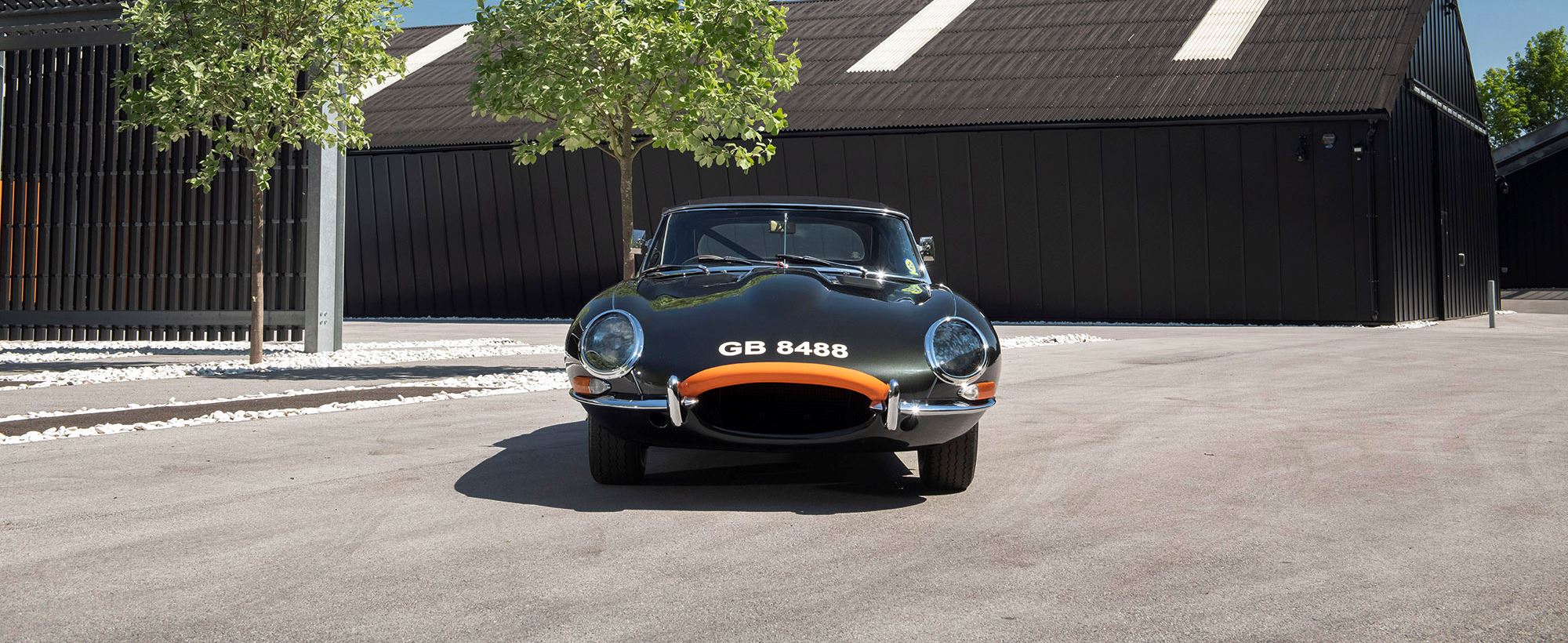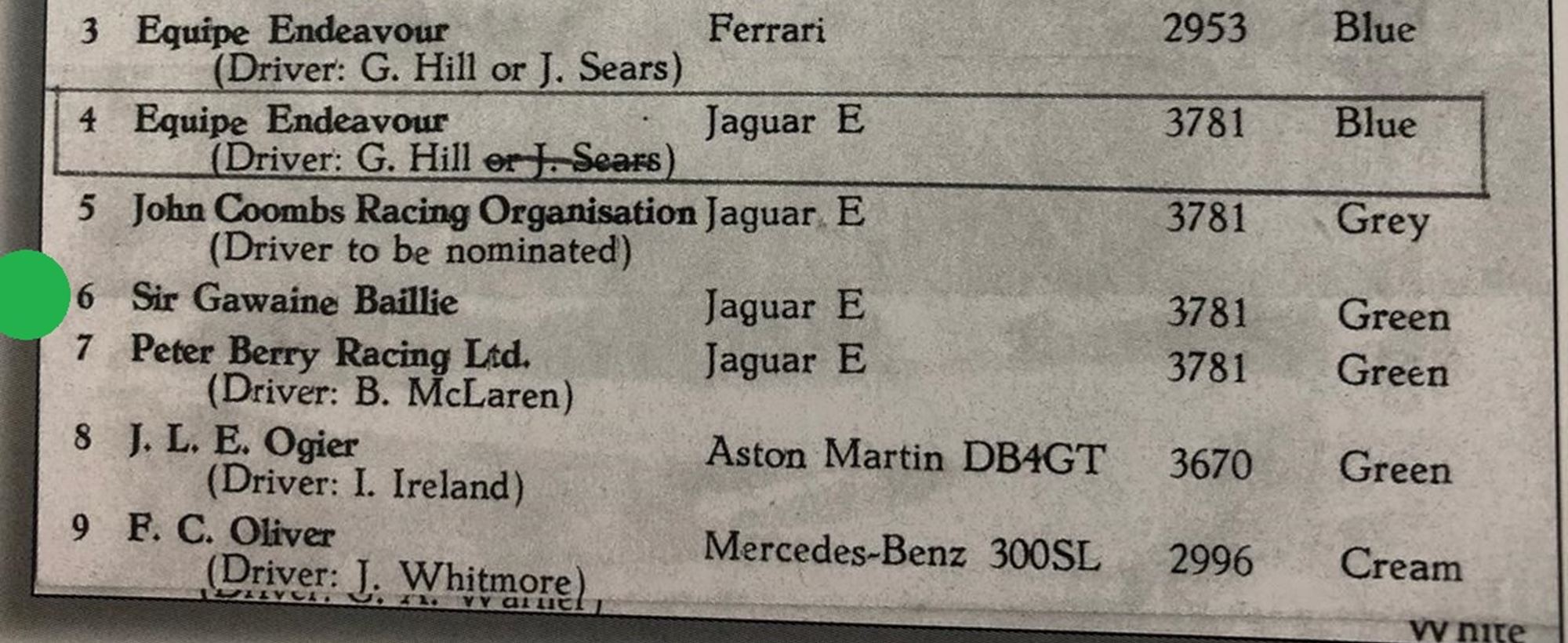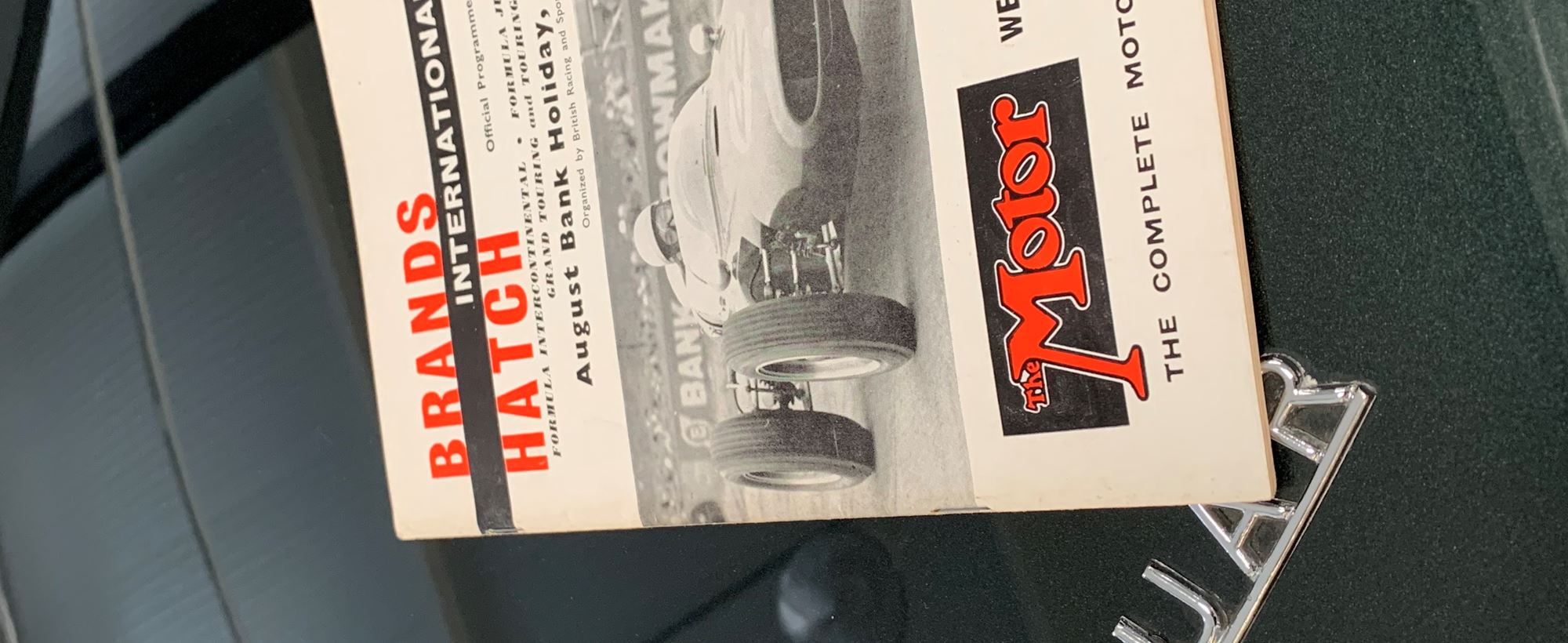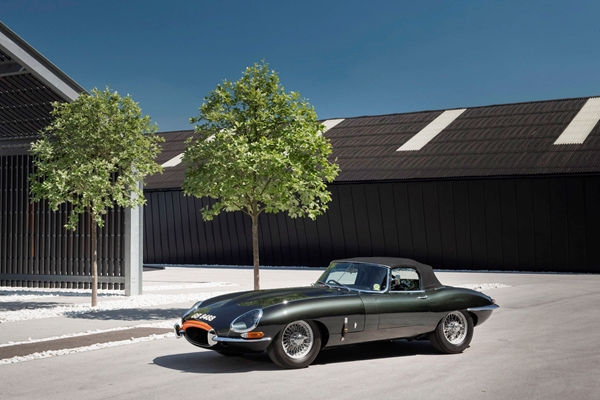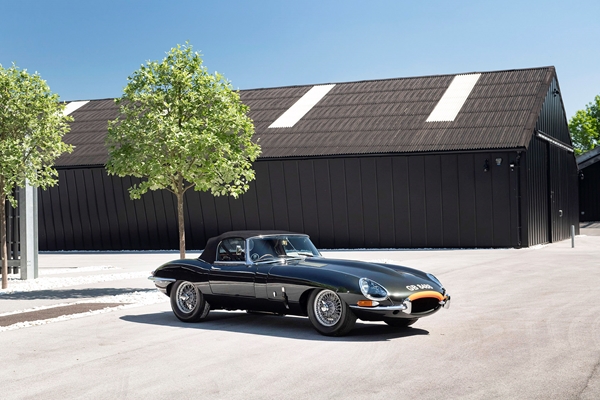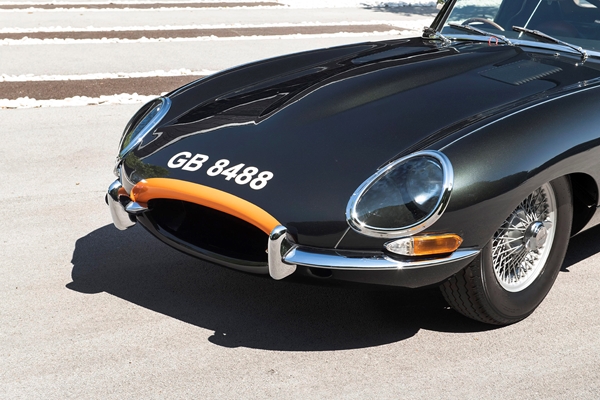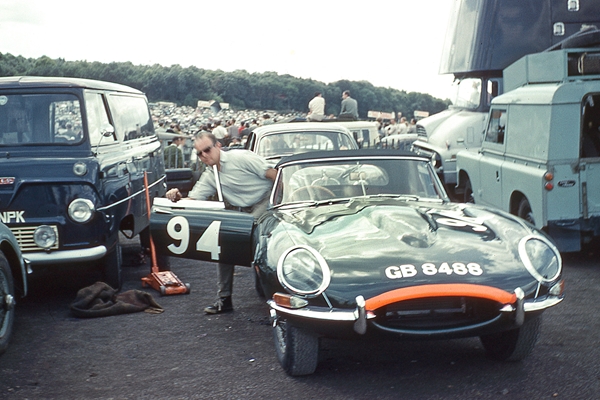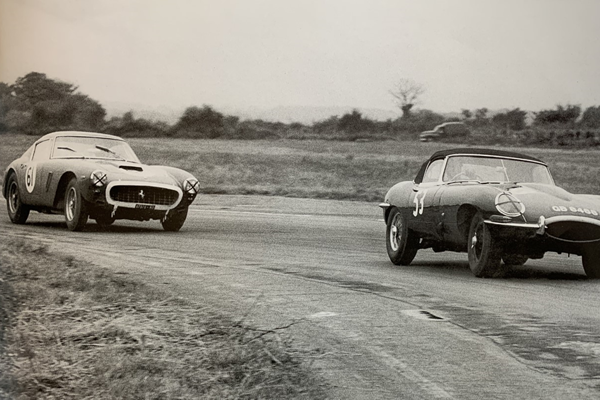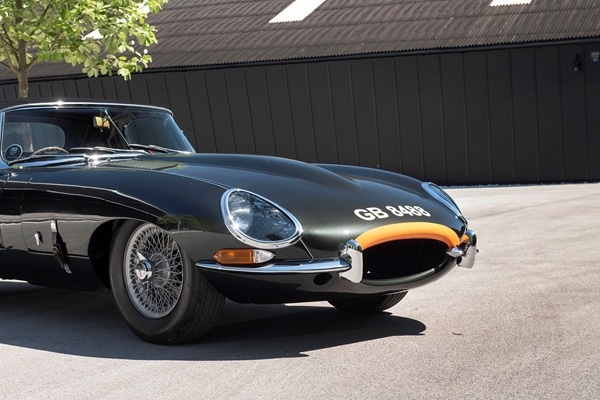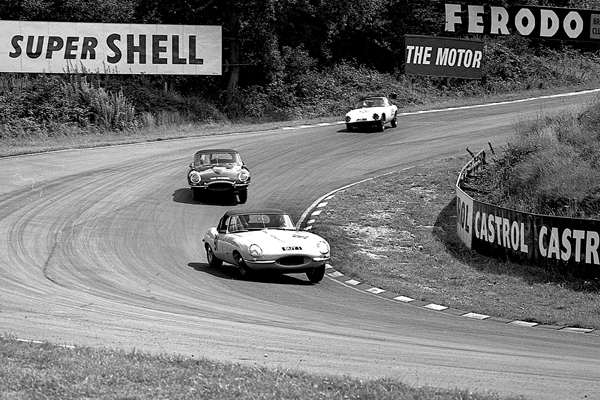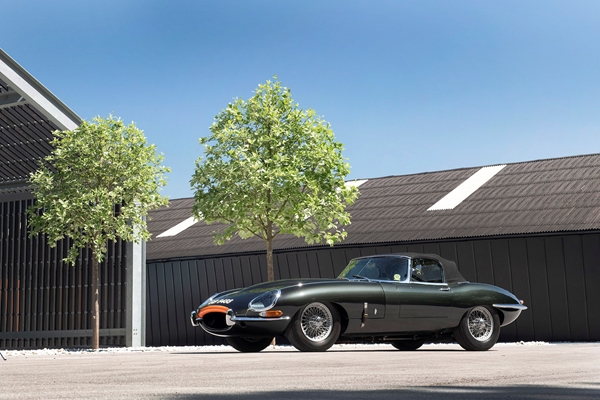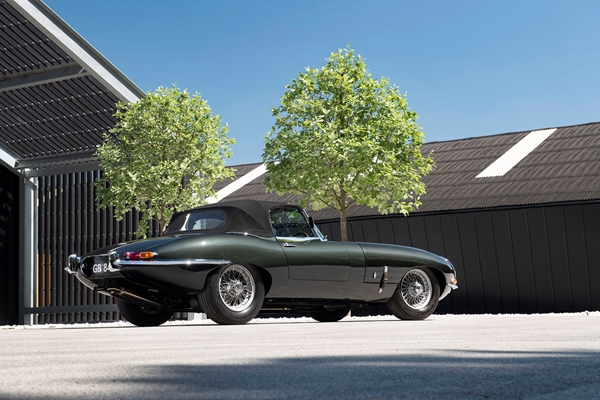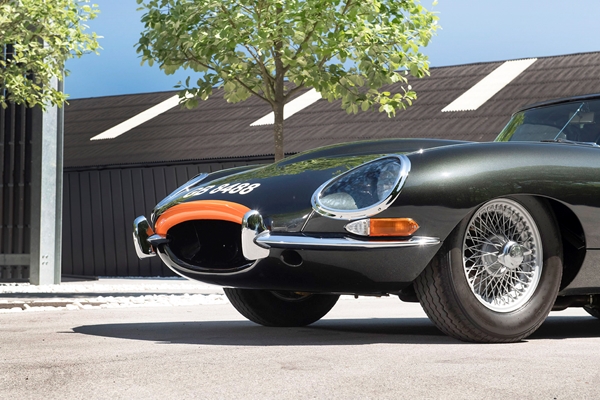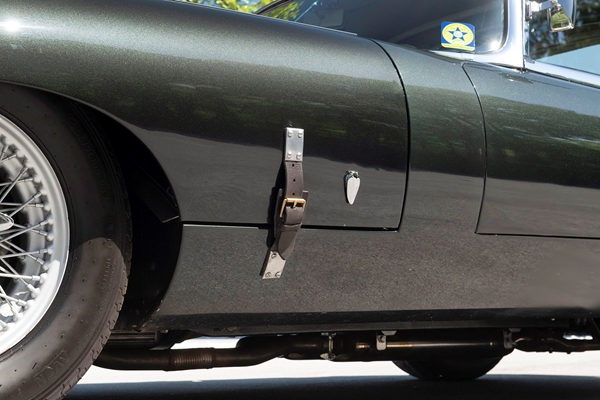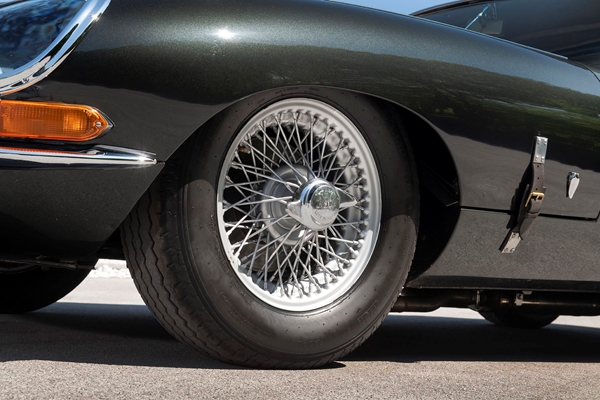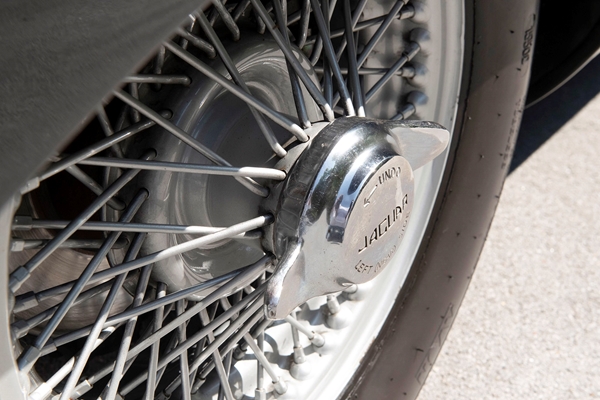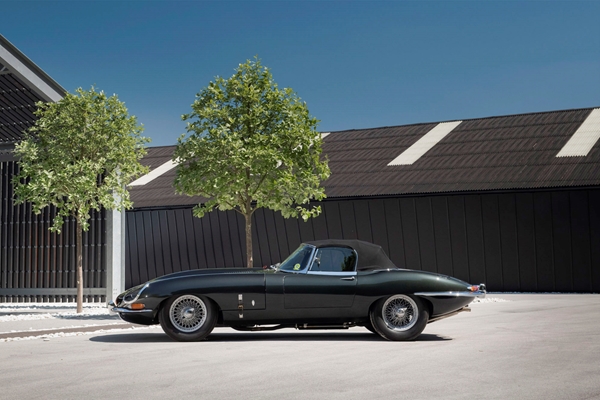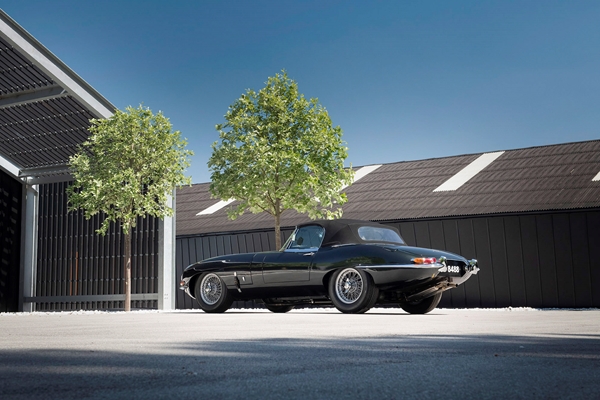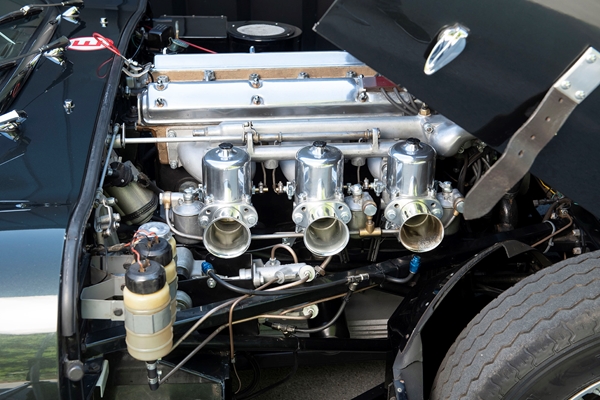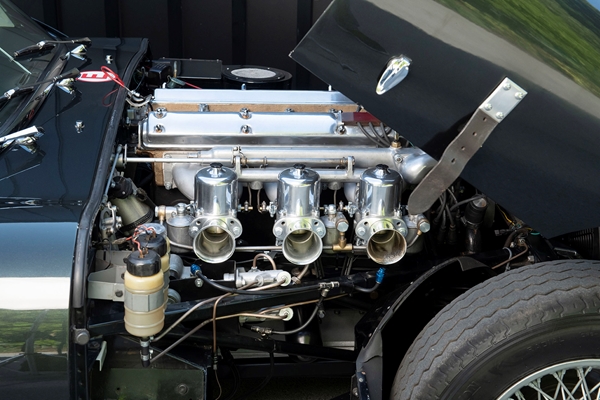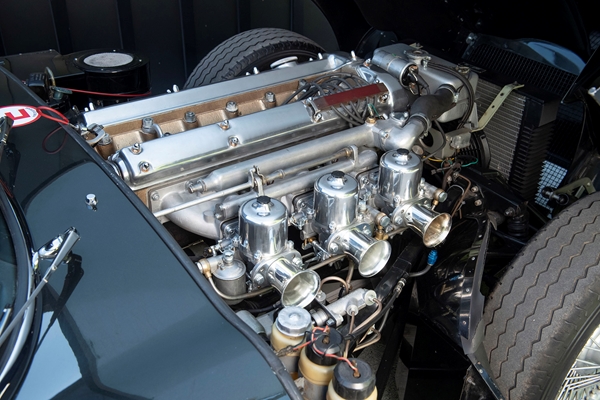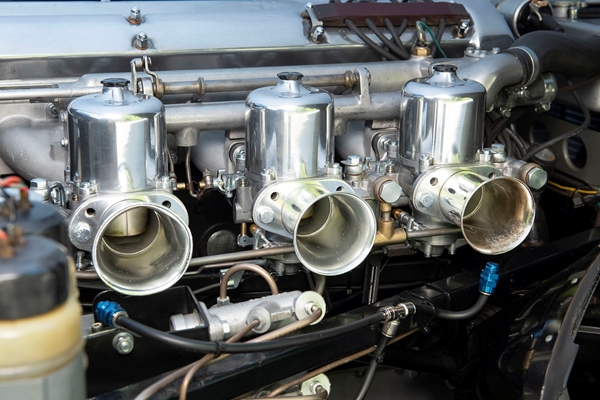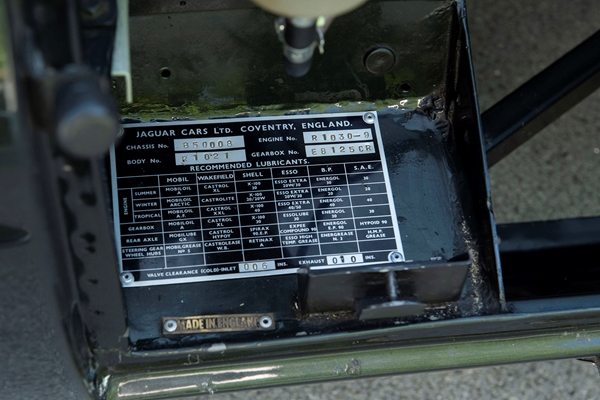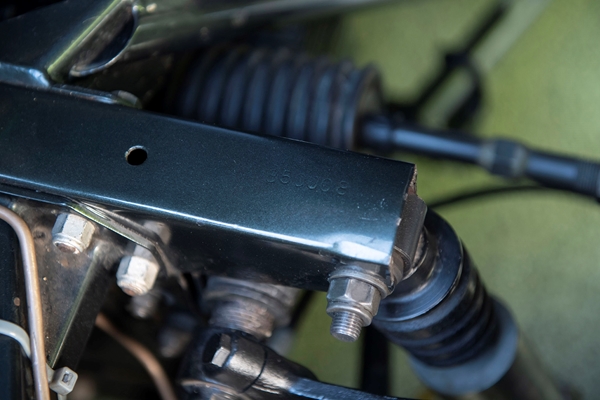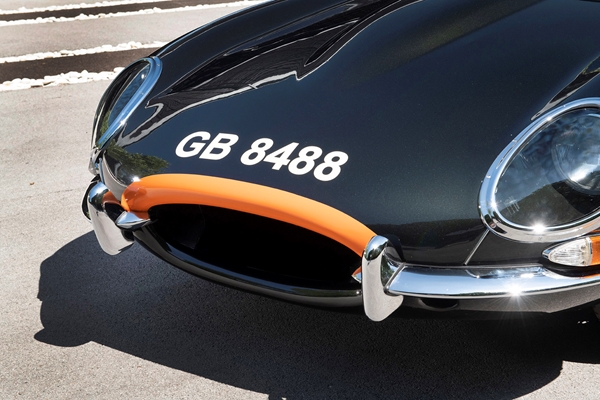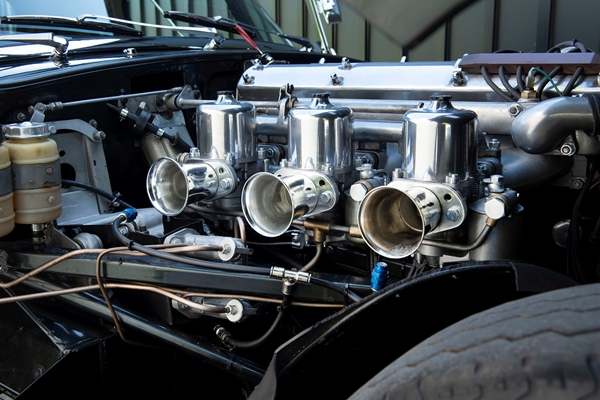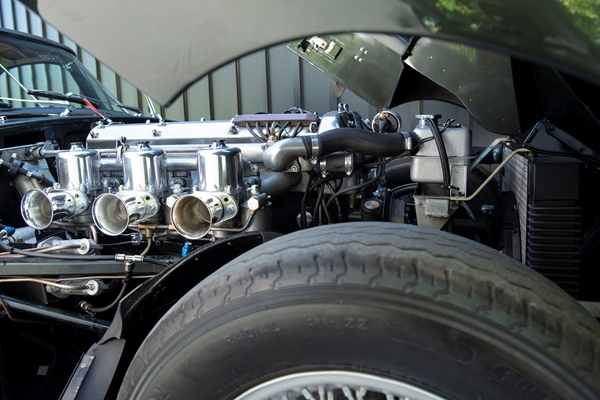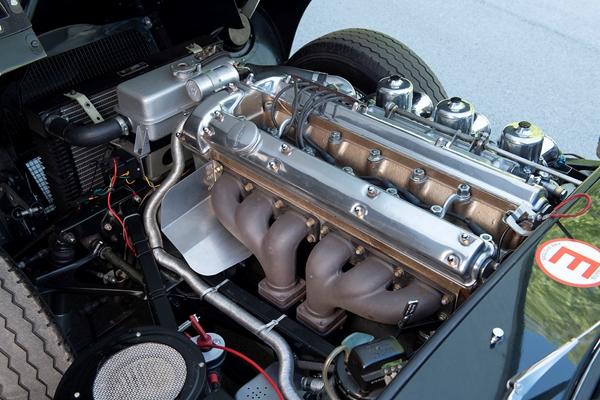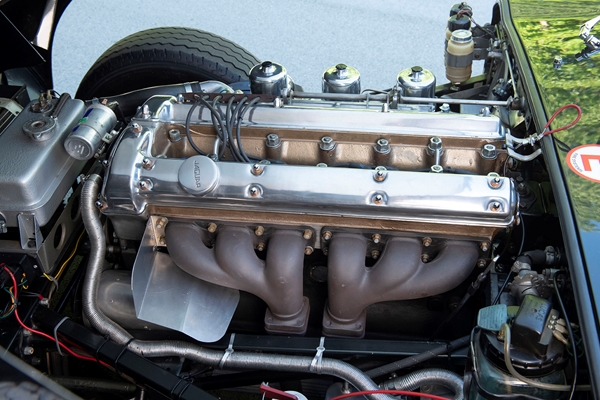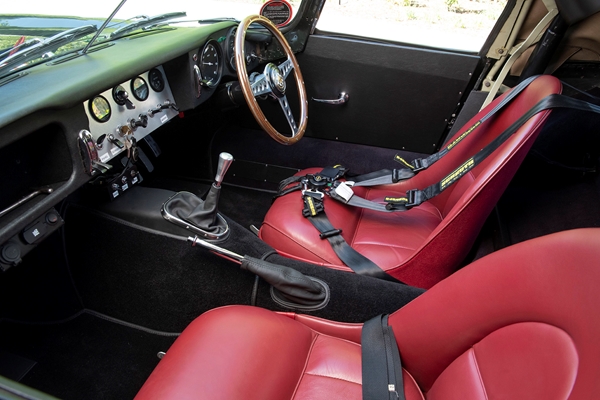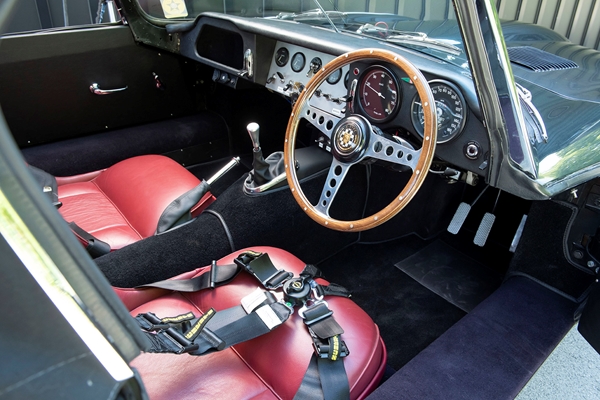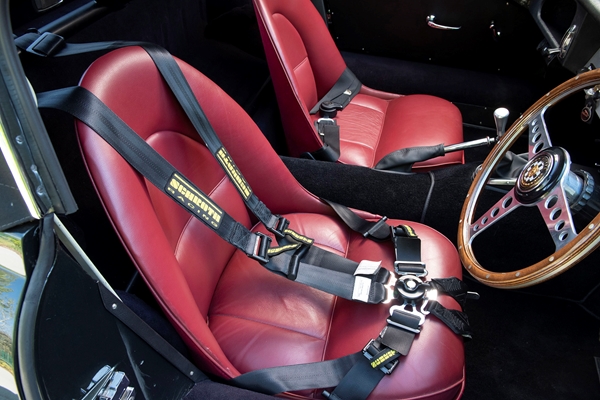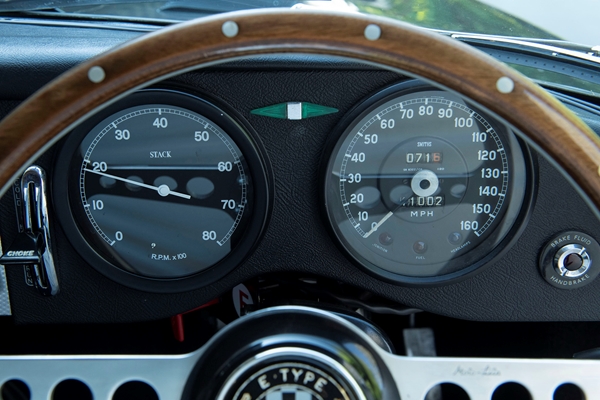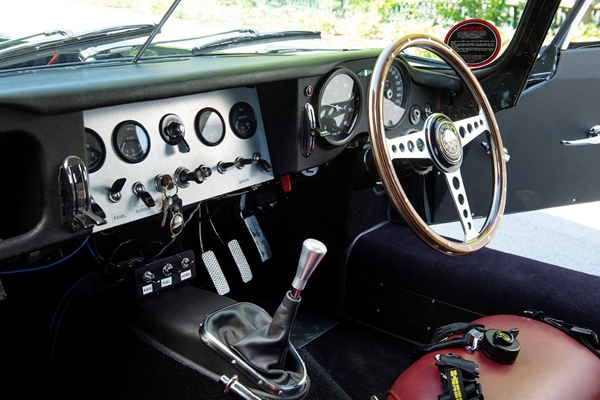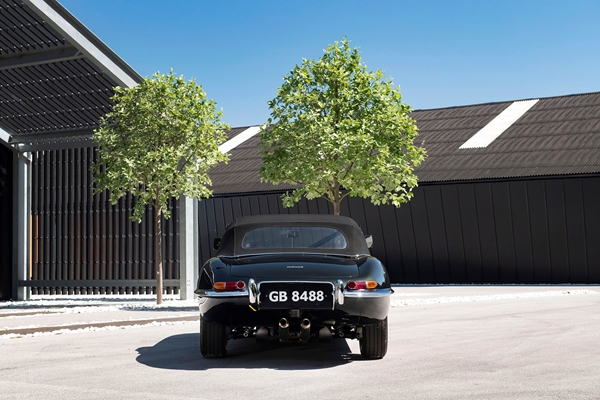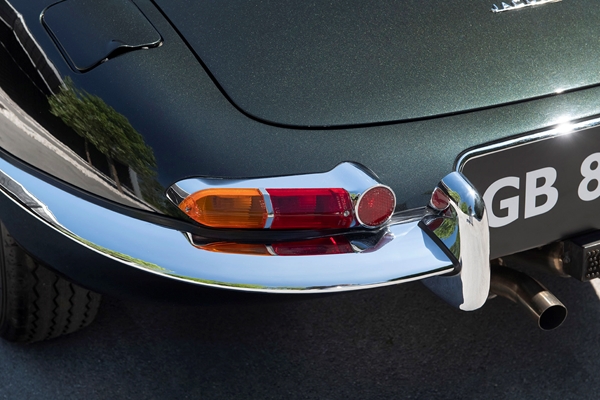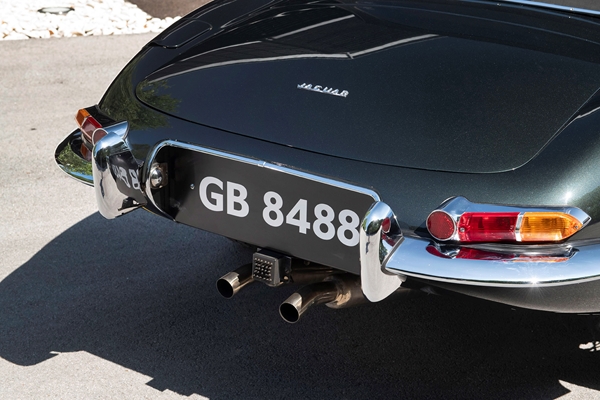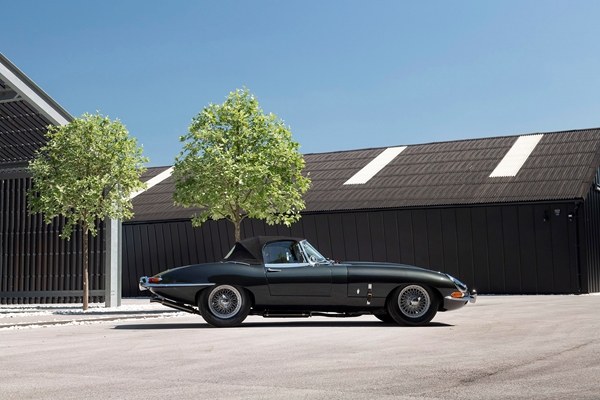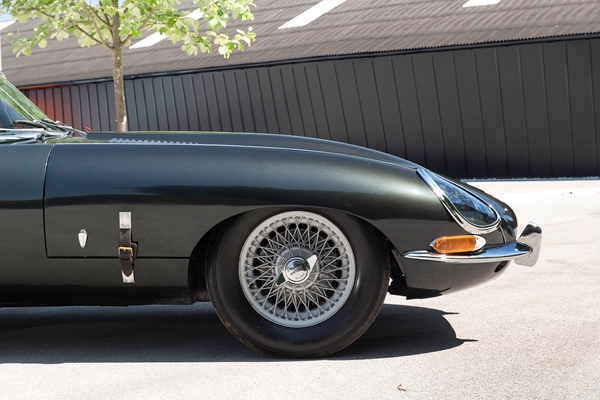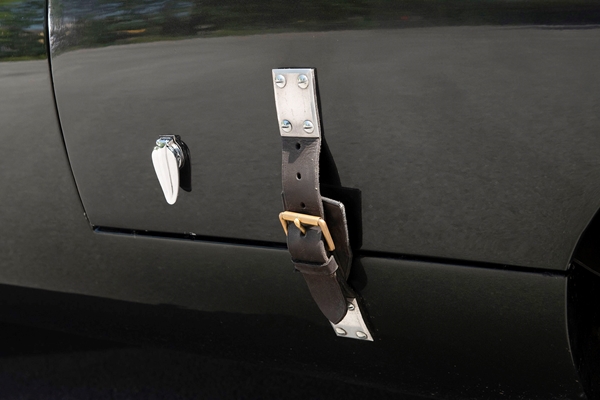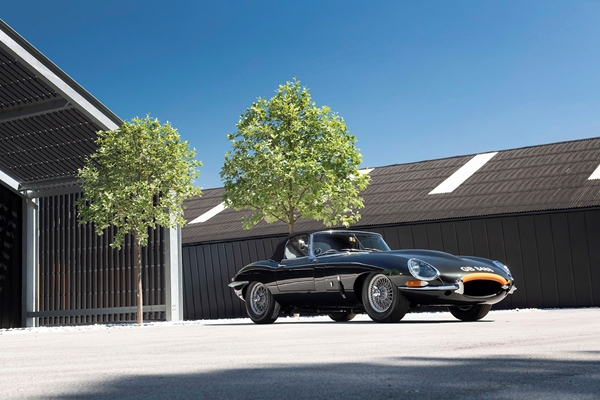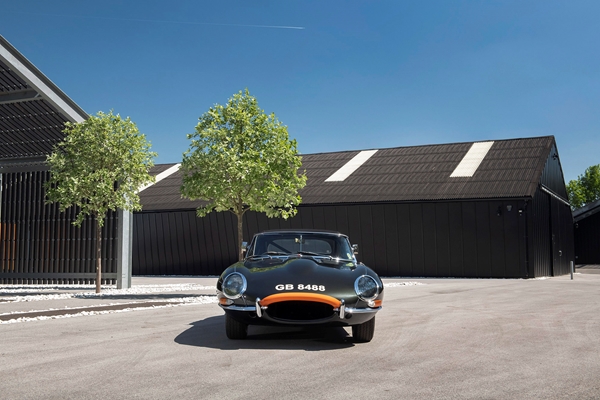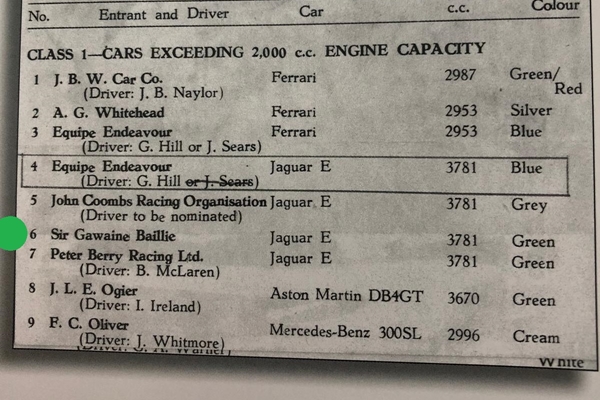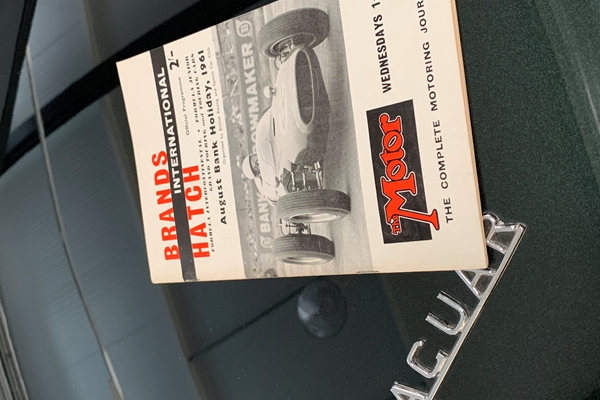1961 Jaguar E-type 'Project ZP' Factory Competition car - Ex-Sir Gawaine Baillie - The 8th E-type ever built
Chassis 850008 is one of seven factory competition cars built under ‘Project ZP 537/24’ for the 1961 season.
In early 1961, the Experimental Department of Jaguar Cars were set the task of turning the stunning new E-type into an Aston Martin DB4GT and Ferrari 250SWB/C beater, within the rules of International GT racing of the period. The already powerful 3.8 litre straight-six would be upgraded to high-compression and equipped with a special Experimental Dept gas-flowed head with shorter competition valves. The same gas-flowing was applied to the inlet manifold, and internally there were competition valve springs, polished connecting rods, and competition crank damper. Competition trumpets would be fitted to the SU Carburettors. The transmission was brought up to spec too with the addition of a lightweight flywheel, competition clutch and close-ratio competition gearbox. Of course, there were exhaust and suspension changes to bring the E-type in line with the current racing technologies. The ‘Project ZP’ Jaguar E-types were the works’ answer to what Ferrari and Aston Martin had produced in their factory racing departments, and their potential was backed up by the research and development put into the unique E2A Prototype that served as the testbed for these magnificent seven E-types.
Allocation of the seven factory ‘ZP’ competition cars was simple – all cars would be going to top British teams with strong links to Jaguar Cars. Six of the cars would go out in pairs, with one car from each pair being the primary race car, and one being the ‘paddock’ car that was always on-show and could be used as a back-up should the race car fail. Equipe Endeavour would get chassis 850005 and 850018, John Coombs Racing Organisation would have chassis 850006 and 850007 while Peter Berry Racing Team would have chassis 850010 and 850013. However, there was one unique car that would go to an individual, and that is chassis 850008, supplied direct the Sir Gawaine Baillie, an aristocratic racing driver and businessman who owned and lived in Leeds Castle.
Endeavour, Coombs, Berry and Baillie had all seen success over the previous years with Jaguar Mk1 and Mk2 saloons, and all were friends of Sir William Lyons, hence being the obvious choices for the new experimental factory competition GTs.
The allocation and registrations the seven ‘ZP’ cars wore:
- Equipe Endeavour – 850005 – ECD400 (race car)
- Equipe Endeavour – 850018 – UPM400/EE400 (road/spare car)
- John Coombs Racing Organisation – 850006 – BUY1 (4WPD) (race car)
- John Coombs Racing Organisation – 850007 – 9VPD (road/spare car)
- Peter Berry Racing Team – 850010 – 3BXV (race car)
- Peter Berry Racing Team – 850013 – 4BXV (road/spare car)
- Sir Gawaine Baillie – 850008 – GB8488 (race car)
Of the dedicated race cars, ECD400 would of course go onto become the first ever E-type to win a race with Graham Hill at Oulton Park in April 1961. It would also be driven to success by Jack Sears and Mike Parkes that year. BUY1 would be driven to great success in 1961 by Roy Salvadori and Jack Sears before becoming arguably the most important E-type in the world when it became the first ever lightweight – it then took on the even more iconic 4WPD registration. 3BXV would have the great Bruce McLaren steer her to a couple of podiums in 1961. The final pure race car, and the car we have for sale, was Sir Gawaine Baillie’s GB 8488, which too was raced during the 1961 season.
On delivery of his car (the 8th E-type ever built), Baillie would add his customary bright orange noseband to the opalescent dark green car, a livery subsequently made famous by the BRM Grand Prix team the following season. Baillie and chassis 008 would be entered into the now legendary National Spring Meeting at Oulton Park on 15th April 1961 – the first ever race and first ever win for a Jaguar E-type, secured by Graham Hill in ECD400. Whilst the result for Baillie is unknown (likely a DNF) the car was certainly entered, as can be seen by the cutting from Graham Hill’s personal race programme from that day (below). Next up was the Archie Scott-Brown Memorial Trophy at Snetterton where Baillie scored an impressive 4th behind Mike Parkes in ECD400 and Salvadori in BUY1 in the top class. August saw the International Meeting at Brands Hatch for the Peco Trophy, where the best GTs and drivers of 1961 were entered. The rollcall was as impressive as a Grand Prix grid, with Stirling Moss in the Rob Walker 250SWB, Parkes in the Equipe Endeavour SWB, Graham Hill in ECD400, Salvadori in BUY1, Bruce McLaren in 3BXV, and of course Ballie in GB8488. Bailie would bring chassis 008 home in an impressive 6th overall and 4th in class behind winner Moss, Salvadori and McLaren. We have a great picture of Bailie bearing down on Salvadori as they sweep through the right-hander now known as Graham Hill bend at Brands Hatch. The 1961 season would be book-ended by another great result at the Molyslip Trophy at Snetterton, where Baillie would come home 6th overall behind Parkes’ Ferrari, Salvadori in BUY1, Innes Ireland’s Aston DB4GT Zagato, and Lumsden in E-type 898BYR.
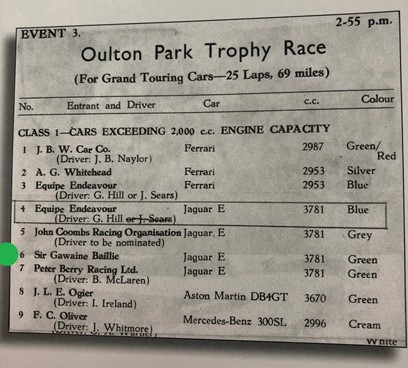
Following the 1961 season, Baillie would retire the competition Jaguar, focussing his efforts on the gruelling Tour de France and his growing engineering business. But he couldn’t be tempted away from the track for long and like his friend Jack Sears, he would order one of the very special Nascar Galaxies from Holman & Moody for the 1963 BSCC season, before moving onto a Mustang that he would even share with Jacky Ickx in 1964. For 1965 he stuck with Mustang power and claimed 2nd in the top class of the BSCC, and he would go one better in 1966, taking the Class A championship in his Ford Falcon, complete with high-compression engine technology that his company pioneered. 1966 would be his last year of racing.
Ballie was the ultimate gentleman driver – enormously well-funded, well-connected, passionate, and importantly, very quick. His passion extended into other, less high-octane areas too – he was a great stamp collector (something even his family were not aware of). He built arguably the greatest British and British Empire collection, a collection that sold in 2004 for a staggering 16.5 million pounds following his death. Baillie, or by his full name Sir Gawaine George Hope Baillie, 7th Baronet of Polkemmet Linlithgowshire, was a great racer, an aristocrat, a collector, an engineer, an industrialist, and lived in an ancient fortress – what more could you want from a previous owner.
Following its racing exploits in 1961, chassis 008 did not race again in period, becoming a road car in the UK and then onto the States where it remained until 2018 when purchased by the current owner. Incredibly for a car that has raced, it retains its original matching competition engine, close-ratio gearbox, bonnet, and of course the body is all original. The car has entered the flagship Kinrara Trophy at the Goodwood Revival twice, and to protect the original parts, has had a new bonnet, engine and gearbox prepared by Gary Pearson.
The story of these seven factory competition Jaguar E-types is a very important one. Not only are they rarer than the priceless lightweights that they gave birth to, but they are the first chapter in the Jaguar E-type becoming one of the greatest fast GTs in history. They proved unquestionably that the E-type was as fast as it was beautiful. As the most original of all the pure competition ZPs, Chassis 008 is an infinitely eligible car that would be a fabulous addition to any great collection. Significantly, the car has not been on the open market for many decades .
